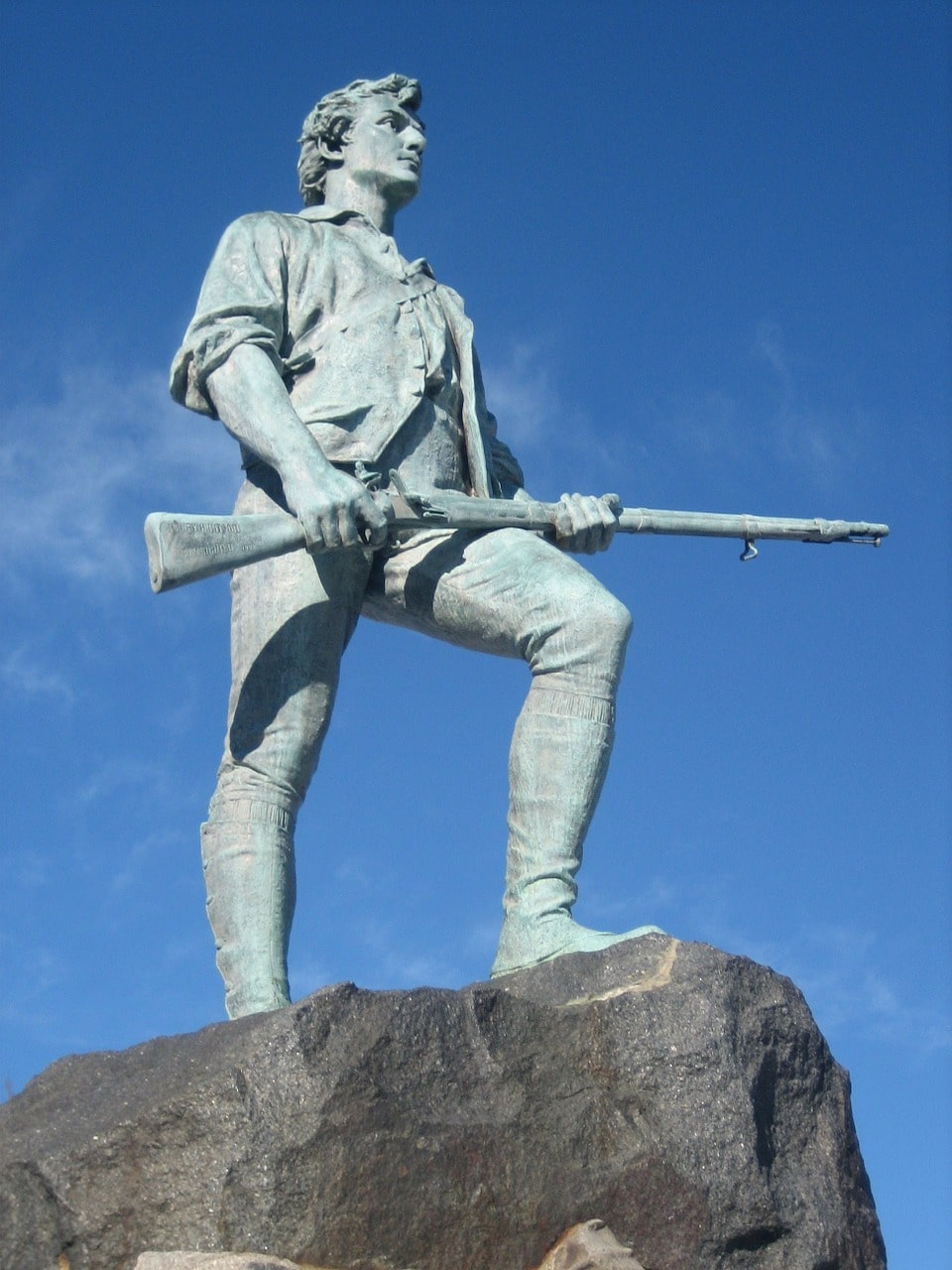
Article Summary: Historic Sites In Massachusetts
Historic Sites In Massachusetts. More Than Just Parks has 15 incredible must-see sites for you to visit.
I’ve been to so many of these amazing places since retiring from teaching in 2018. Did I mention that I taught history? I spent a lifetime teaching about the history behind these momentous sites. Then I got to see them firsthand. And now I’m sharing the stories of these incredible places with you. It doesn’t get any better than that!
I’m going to give you my list of the Top 15 Historic Sites in Massachusetts that you’ll want to see. These are our top 10 sites which we will provide in reverse order. We’ve got amazing monuments, fascinating exhibits, historic museums, legendary figures and so much more.
Table Of Contents: Historic Sites In Massachusetts
Top 15 Historic Sites In Massachusetts
15. Lizzie Borden House
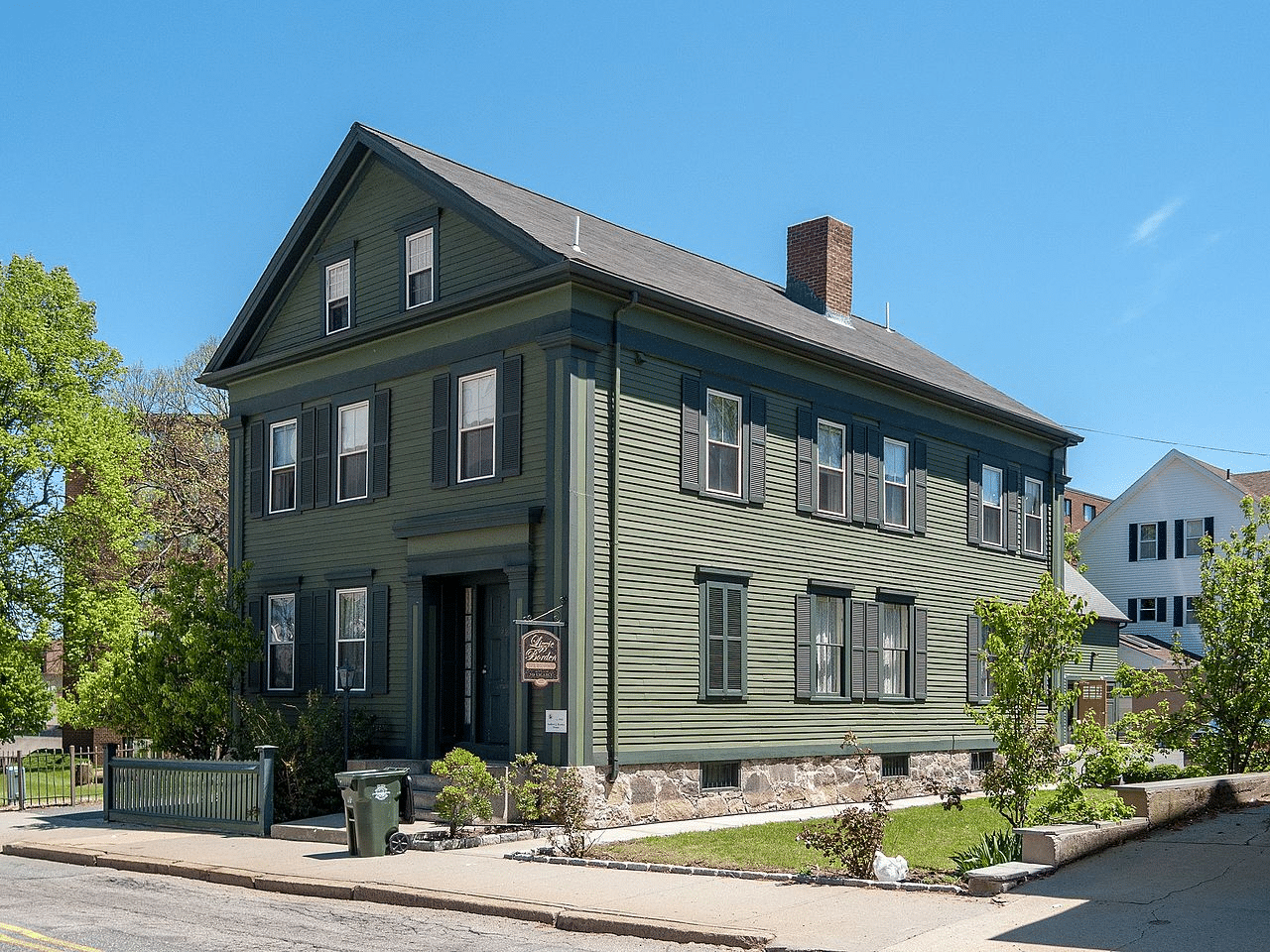
Massachusetts is famous for its colonial history, as well as its significant role in the American Revolution. It is a progressive state that has recorded several “firsts” throughout history including the first state constitution.
At More Than Just Parks, we’re celebrating this important state with our list of the Top 15 Historic Sites In Massachusetts. And we’re kicking off our list at #15 with a notorious bed & breakfast which served more than just coffee. At #15 we have the Lizzie Borden House.
The Lizzie Borden House is a historic bed and breakfast located at 92 Second Street in Fall River, Massachusetts. It is most famously known for being the site of the infamous Borden Murders, which occurred on August 4, 1892.
The murders involved the killing of Andrew and Abby Borden, Lizzie’s father and stepmother, who were found hacked to death with a hatchet in their home. Lizzie was arrested and tried for the murders, but was ultimately acquitted due to lack of evidence.
Following the trial, Lizzie and her sister, Emma, purchased a large home in Fall River, which they named “Maplecroft”. Lizzie lived there until her death in 1927, and the house was eventually sold to a private owner.
Today It’s A Bed & Breakfast And A Museum
In the years that followed, the house at 92 Second Street was turned into a rooming house and eventually fell into disrepair. In 1996, new owners purchased the property and began restoring it to its original condition, with the goal of turning it into a bed and breakfast.
Today, the Lizzie Borden House operates as a museum and bed and breakfast, offering tours of the house and the surrounding area. The house has been preserved to look as it did at the time of the murders, and many of the original furnishings and decor remain.
It’s a popular destination for tourists and true crime enthusiasts, who come to learn about the history of the Borden family and the infamous murders that took place in the house.
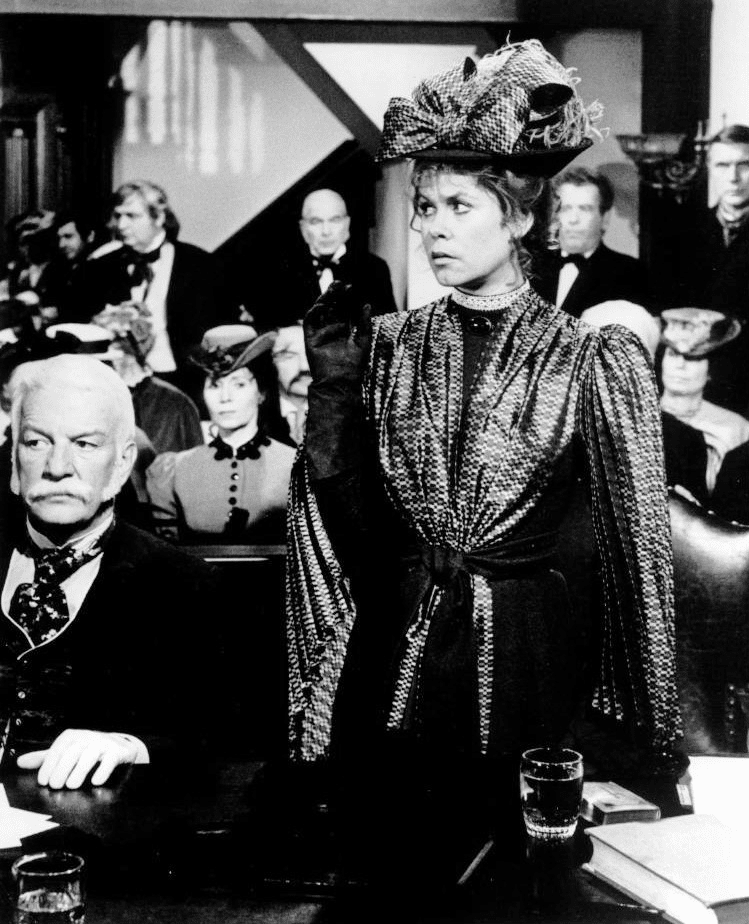
14. Blue Hill Meteorological Observatory
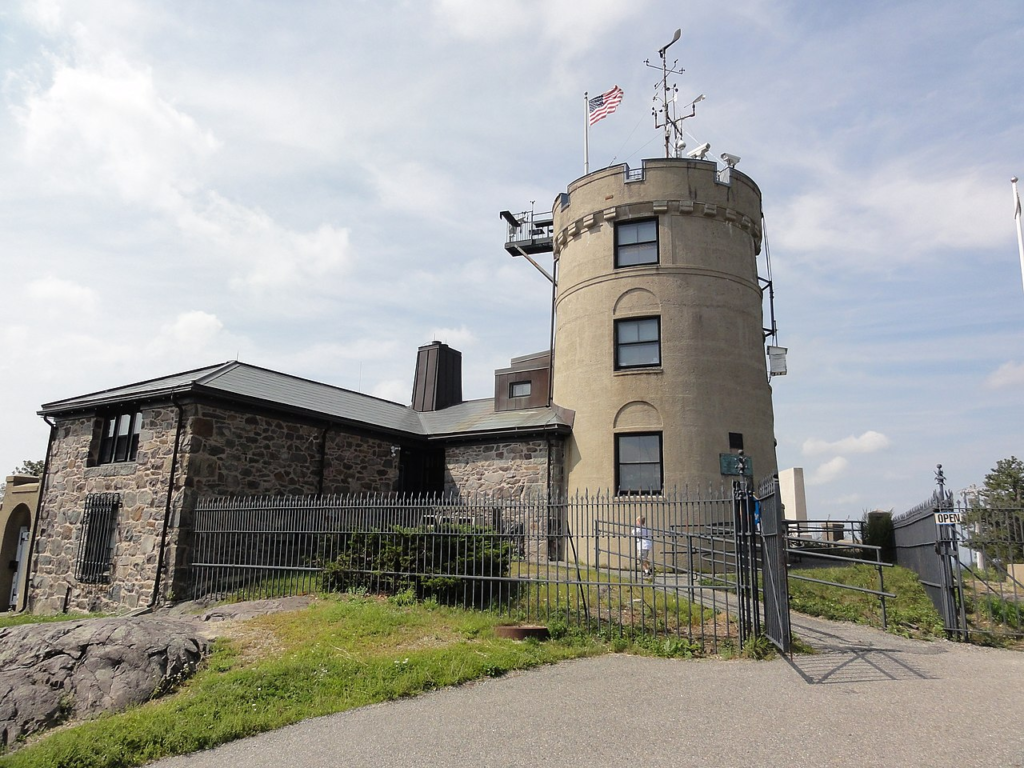
We move from a “Bed & Breakfast” with a notorious reputation to a site where the sky’s the limit. At #14 on our list of the Best Historic Sites In Massachusetts is the Blue Hill Meteorological Observatory.
The Blue Hill Meteorological Observatory is located atop the summit of Blue Hill in Milton, Massachusetts. It was founded in 1885 by Abbott Lawrence Rotch, a Harvard graduate and meteorologist, with the goal of studying the weather and climate of the New England region.
At the time of its founding, the Blue Hill Meteorological Observatory was the first privately owned weather observatory in the United States, and one of only a few in the world. Rotch designed the observatory to be a state-of-the-art facility, with cutting-edge instruments and technology.
In its early years, the observatory was primarily used for research and experimentation, with Rotch and his team of scientists collecting data on the weather, atmospheric conditions, and climate patterns of the region. Over time, the observatory’s research expanded to include studies of air pollution, aviation weather, and other meteorological phenomena.
Blue Hill Today
During World War II, the observatory played a key role in weather forecasting for military operations. In the years that followed, it continued to be a leader in the field of meteorology, with its scientists developing new technologies and methods for studying the weather and climate.
Today, the Blue Hill Meteorological Observatory is operated by the Department of Earth, Atmospheric and Planetary Sciences at the Massachusetts Institute of Technology (MIT).
It remains an important center for weather and climate research, with its scientists collecting and analyzing data on a wide range of meteorological phenomena.
The observatory also serves as a historic landmark and tourist attraction, with visitors able to tour the facility and learn about its history and contributions to the field of meteorology.
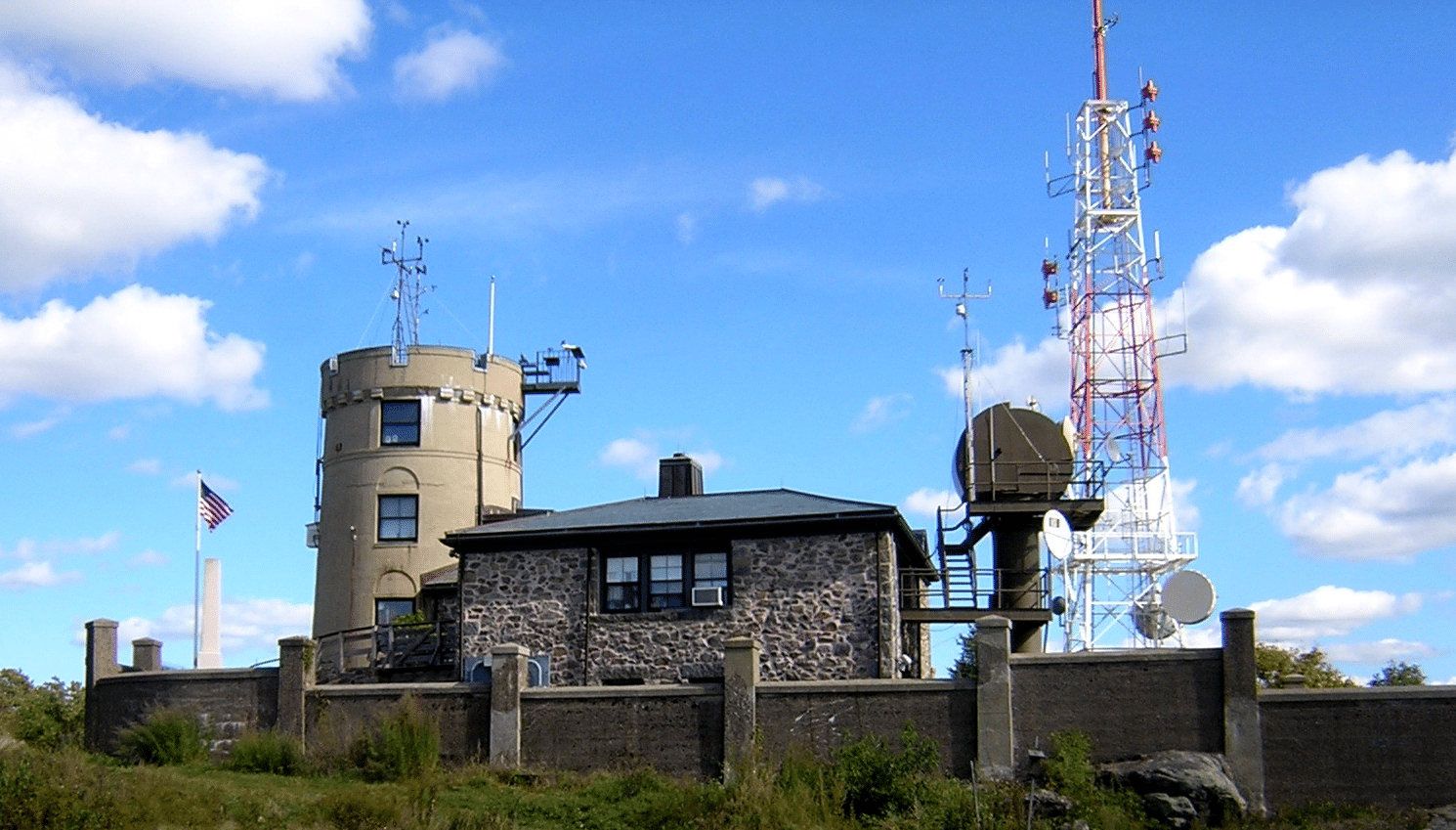
13. Emily Dickinson Museum
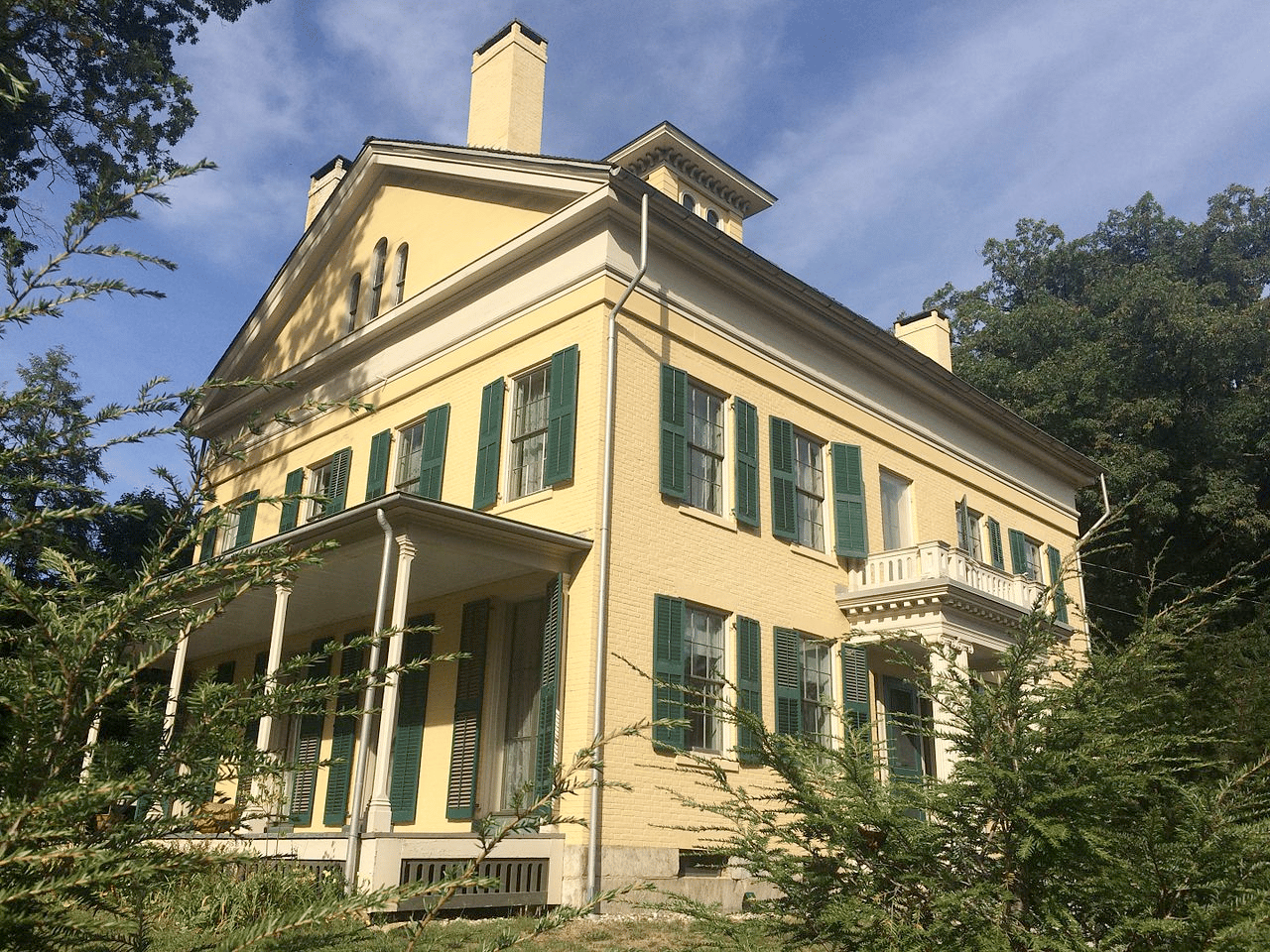
In developing our lists of historic sites we strive to provide something for everyone. If you prefer fiction to fact than our next site might be just what you’re looking for as it honors a literary legend.
At #13 on our list of the Best Historic Sites In Massachusetts is the Emily Dickinson Museum.
Emily Dickinson
Emily Dickinson (1830-1886) was an American poet who is widely considered to be one of the most important and influential poets in American literature. Dickinson lived most of her life in Amherst, Massachusetts, and wrote over 1,700 poems, many of which were not published until after her death.
Dickinson was known for her unique style of writing, which often featured short lines, unconventional capitalization and punctuation, and complex use of metaphor and imagery. Her poems frequently explored themes of death, nature, love, and spirituality.
Despite her prolific output, only a handful of Dickinson’s poems were published during her lifetime. However, after her death, her sister discovered her vast collection of poetry and began publishing it, leading to her posthumous fame.
Today, Dickinson is considered one of the greatest American poets, and her work continues to be widely read and studied around the world. Her legacy has had a profound impact on American poetry, and she is often celebrated for her originality, insight, and lyricism.
The Emily Dickinson Museum
The Emily Dickinson Museum is located in Amherst, Massachusetts. It’s dedicated to the life and work of the poet Emily Dickinson. The museum is housed in two houses, the Dickinson Homestead and the Evergreens, which were owned by the Dickinson family.
The Dickinson Homestead was built in 1813 and was the birthplace and childhood home of Emily Dickinson. She lived there for most of her life, rarely venturing outside of Amherst. Dickinson wrote nearly 1,800 poems during her lifetime, but only a handful were published while she was alive.
After Dickinson’s death in 1886, her sister Lavinia discovered a cache of poems and letters in her bedroom. Over the next few decades, Dickinson’s work began to receive more attention, and in 1955, the Homestead was opened to the public as a museum.
In 1985, the Evergreens, which had been the home of Dickinson’s brother Austin and his family, was acquired by the museum. The house was restored and opened to the public in 2002, providing visitors with a more complete picture of the Dickinson family and their life in Amherst.
Today, the Emily Dickinson Museum is a popular destination for visitors interested in Dickinson’s life and work. The museum houses a collection of her manuscripts, letters, and personal belongings, as well as exhibits on her family and the history of Amherst.
The museum also hosts a variety of events and programs, including poetry readings, lectures, and writing workshops. The Dickinson Homestead and the Evergreens are both designated National Historic Landmarks.
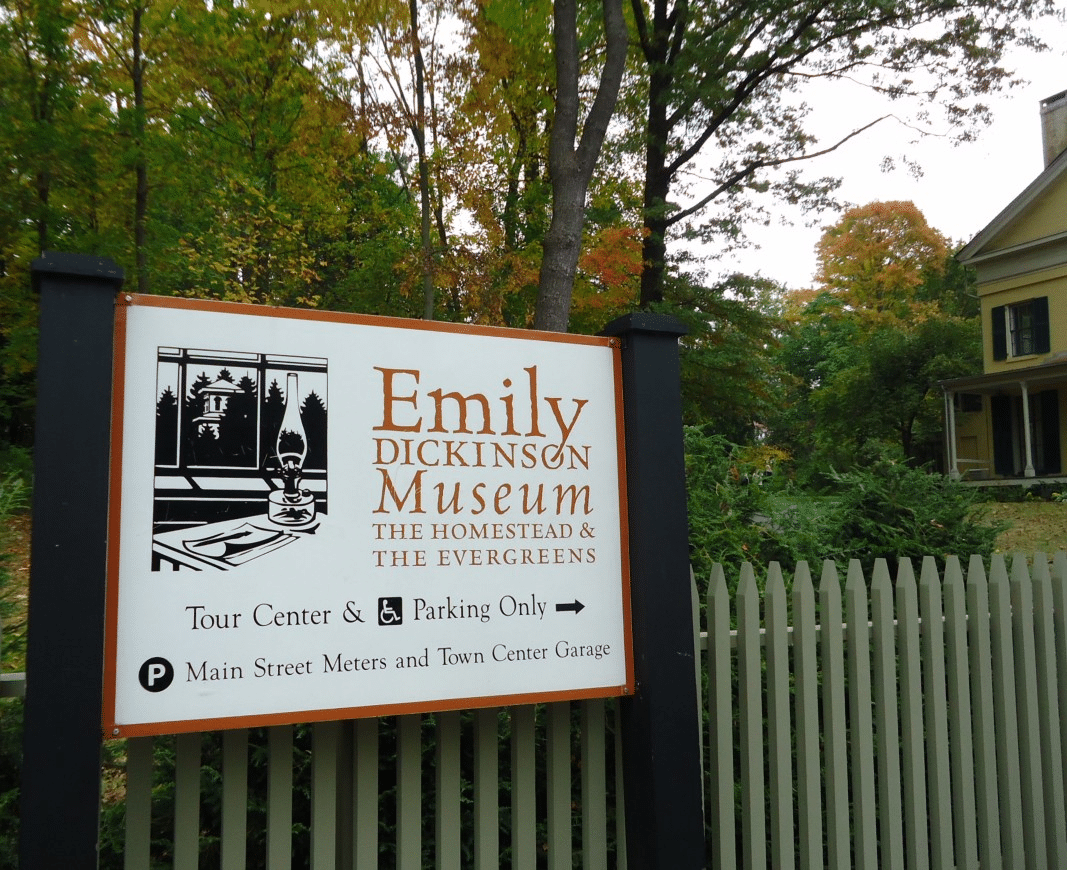
12. Walden Pond
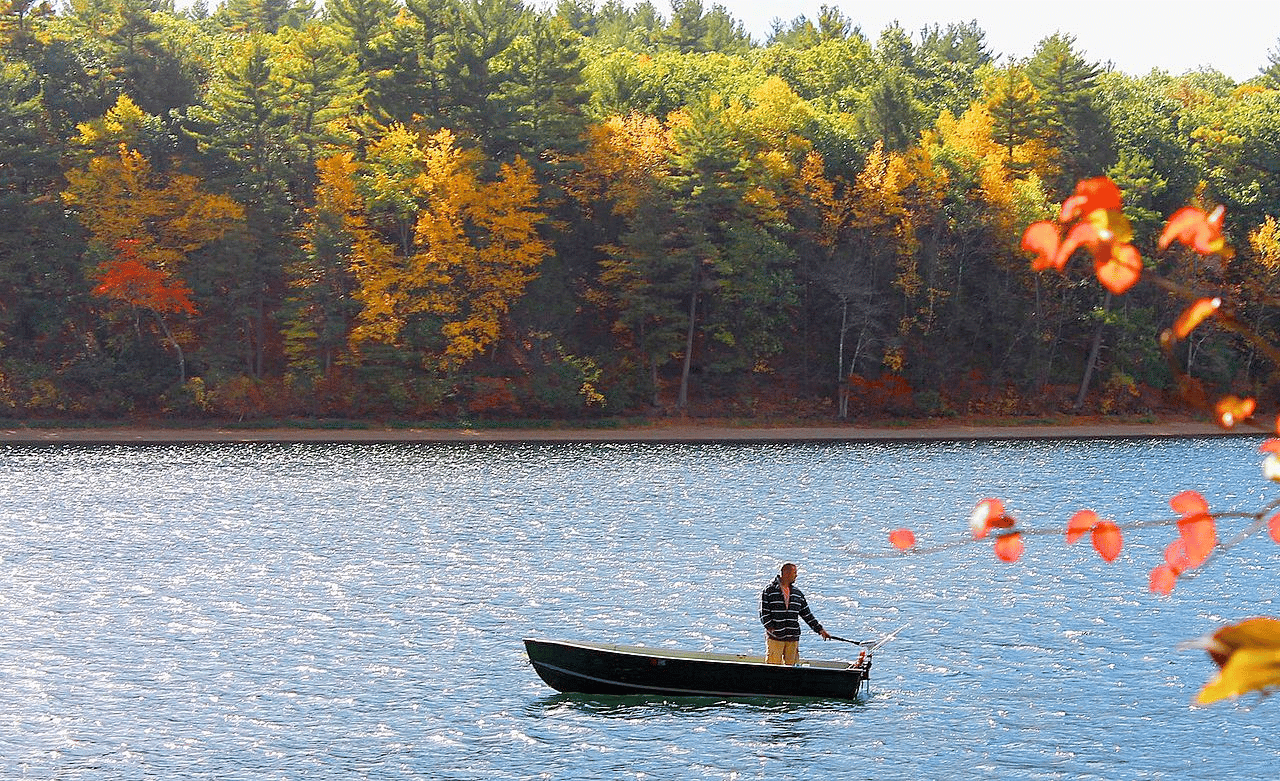
Massachusetts is home to many literary giants and, while we can’t celebrate all of them, our next site honors another of them. At #12 on our list of the Best Historic Sites In Massachusetts is Walden Pond.
It’s a place that’s famous for its association with the writer and philosopher Henry David Thoreau.
Henry David Thoreau
Henry David Thoreau (1817-1862) was an American essayist, poet, and philosopher, best known for his book “Walden,” which is a reflection on his two-year experience living in a cabin in the woods near Walden Pond in Massachusetts.
Thoreau was also a naturalist, an abolitionist, and a staunch critic of American imperialism, advocating for nonviolent resistance and civil disobedience as a means of social and political change.
Thoreau’s writings are characterized by his deep connection with nature, his appreciation for simple living, and his belief in individual freedom and self-reliance.
He was influenced by transcendentalism, a philosophical and literary movement that emphasized the spiritual and intuitive aspects of life and rejected the prevailing materialism and conformity of American society in the mid-19th century.
In addition to “Walden,” Thoreau is also known for his essay “Civil Disobedience,” which argued that individuals have a moral obligation to disobey unjust laws and that governments should be judged by the extent to which they promote justice and equality.
This idea has had a profound impact on social and political movements around the world, including the civil rights movement in the United States and the struggle against apartheid in South Africa.
Thoreau’s legacy continues to inspire people today to live a simpler, more meaningful life in harmony with nature and to stand up for their principles and beliefs, even in the face of opposition.
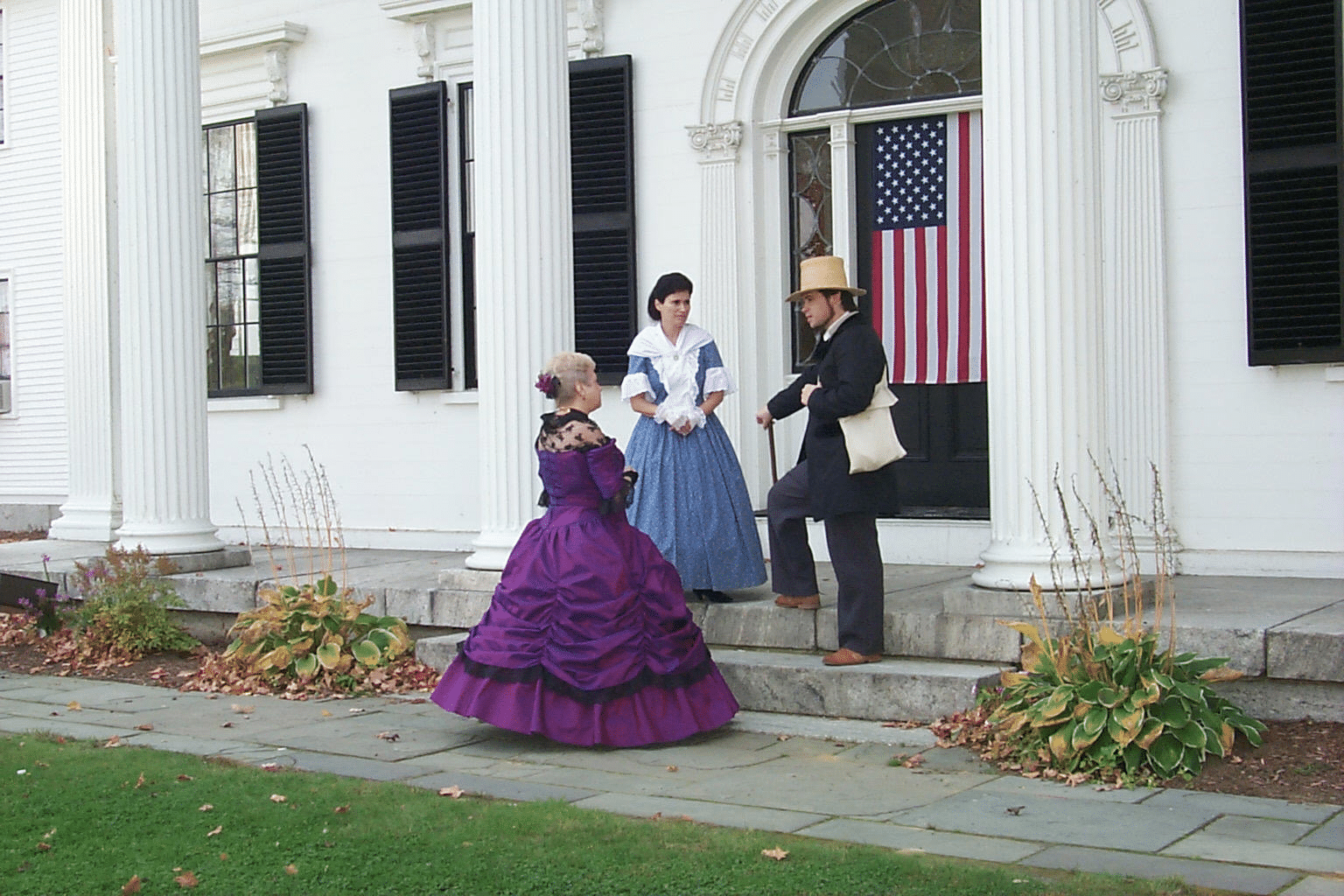
Walden Pond
Before Thoreau’s time, Walden Pond was known primarily as a source of ice for local icehouses. The pond was also used for fishing and swimming, and was a popular picnic spot for Concord residents.
Thoreau moved to the pond in 1845, with the goal of living a simple, self-sufficient life in the woods. He built a small cabin on the shore of the pond and spent his time observing nature, reading, and writing.
Thoreau’s time at Walden Pond had a profound impact on his thinking, and his writings on the natural world and individual freedom continue to be influential today.
After Thoreau’s death in 1862, Walden Pond continued to be a popular recreational spot. In 1922, the Commonwealth of Massachusetts acquired the pond and surrounding land, with the goal of preserving it as a natural and cultural landmark. The site was designated a state park in 1945.
Today, Walden Pond State Reservation encompasses 335 acres of land, including the pond itself, Thoreau’s cabin site, and a replica of the cabin. The park is a popular destination for visitors interested in Thoreau’s writing and philosophy, as well as for hiking, swimming, and fishing.
The pond and surrounding woods remain a symbol of the natural beauty and simplicity that Thoreau celebrated in his writings.
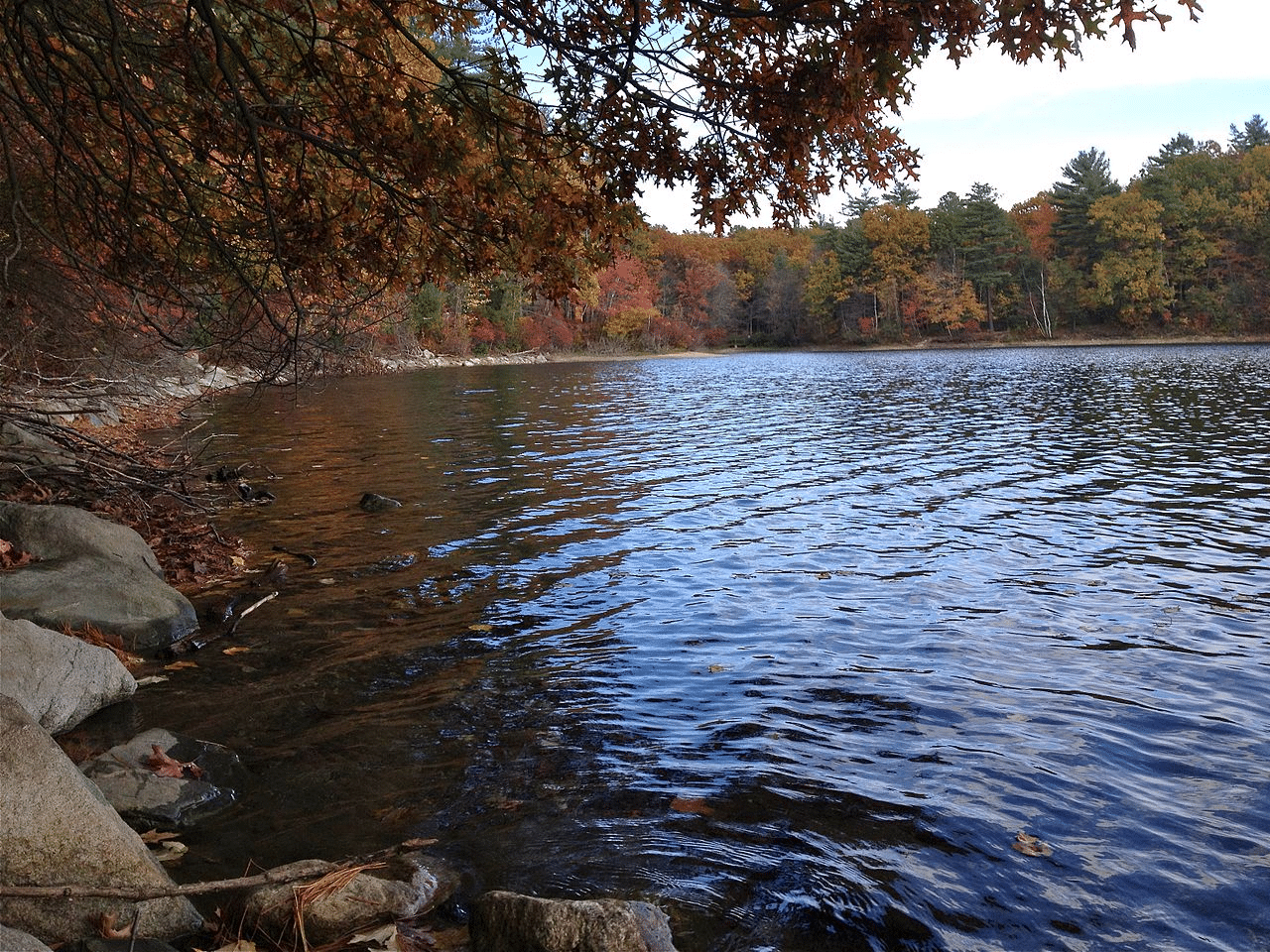
11. Lexington & Concord
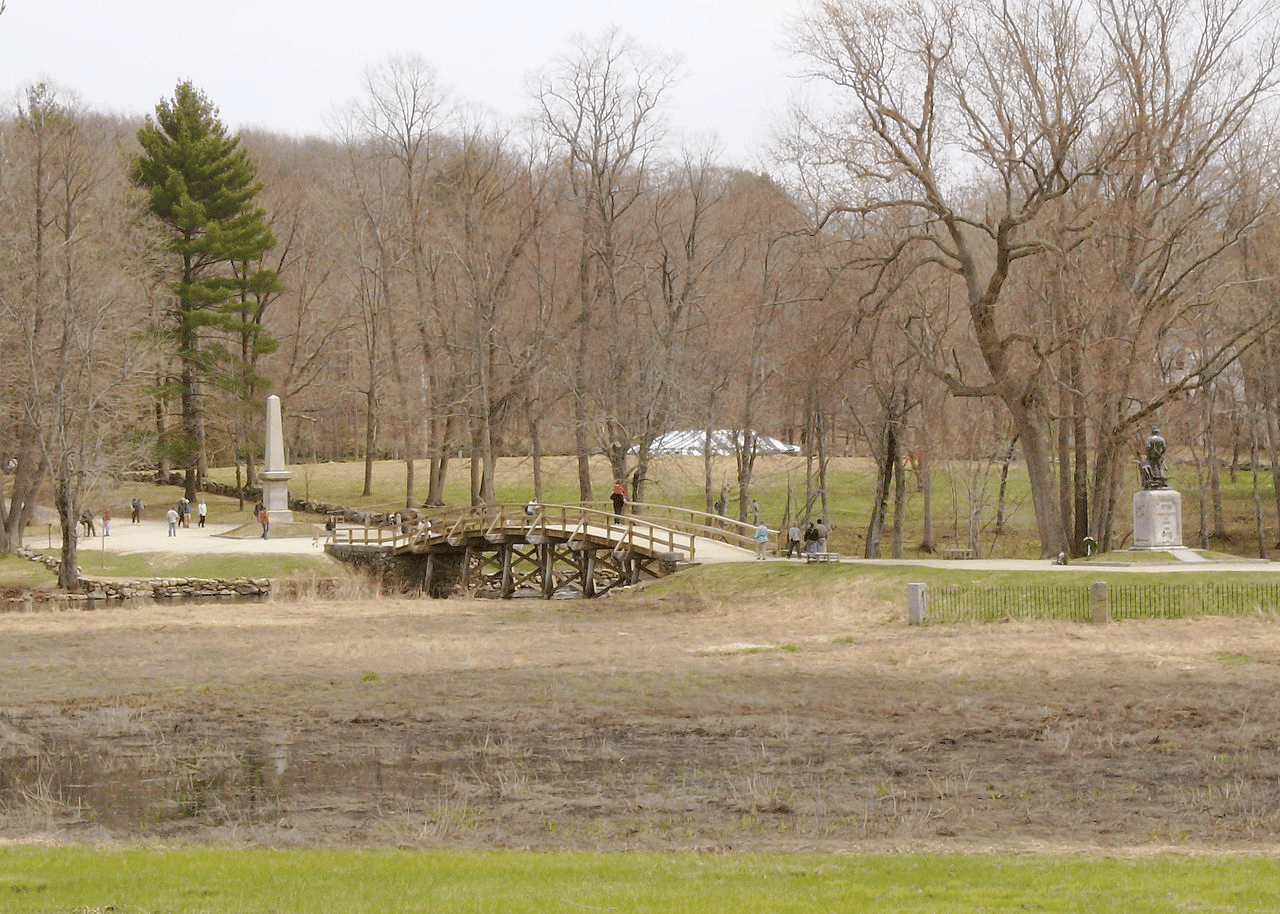
Our next historic site in Massachusetts is the place where there was a shot heard round the world. At #11 on our list of the Best Historic Sites In Massachusetts is Lexington & Concord.
Lexington and Concord are two historic towns located in Massachusetts. The events that took place in these towns on April 19, 1775, played a crucial role in the American Revolution, and are known as the Battle of Lexington and Concord.
In the 18th century, tensions were high between the American colonies and the British government, which imposed various taxes and regulations without the colonists’ consent. The colonists felt that their rights were being violated, and several protests and demonstrations took place.
On April 19, 1775, British troops were sent to confiscate a stockpile of weapons that the colonists had stored in Concord.
The Shot Heard Round The World
However, the news of the British troops’ movements had been leaked, and local militia members gathered in Lexington and Concord to resist the British advance. The ensuing battles resulted in several casualties on both sides and the retreat of the British troops to Boston.
The Battles of Lexington and Concord are widely recognized as a turning point in the American Revolution and are seen as a symbol of the American colonies’ determination to resist British rule.
The events of April 19, 1775 galvanized the American resistance movement and led to the eventual independence of the United States from Great Britain.
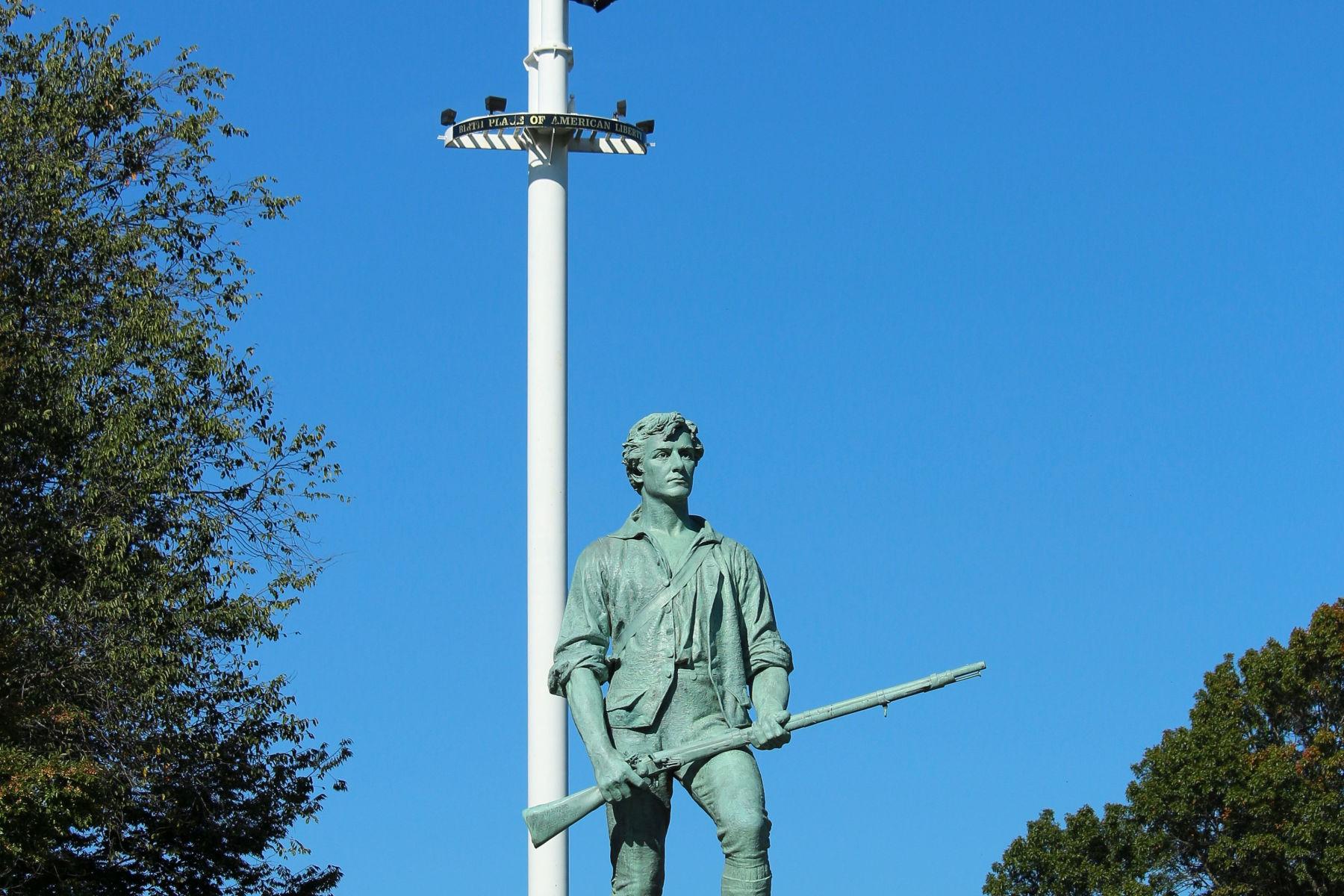
Things To See & Do
Visitors to Lexington & Concord can:
- Visit the Lexington Battle Green, where the “shot heard ’round the world” was fired on April 19, 1775, marking the start of the American Revolutionary War.
- Tour the Lexington Minuteman National Historical Park, which features monuments, trails, and visitor centers dedicated to the history of the American Revolution.
- Visit the Hartwell Tavern, a colonial tavern that served as a gathering place for local Patriots.
- Walk the Battle Road Trail, a scenic 5-mile trail that follows the route taken by British soldiers on April 19, 1775.
- Explore the concord Museum, which features exhibits on the American Revolution, including Paul Revere’s lantern and other artifacts from the era.
- Visit the North Bridge, where the “shot heard ’round the world” was fired and where the first confrontation between British troops and American colonists took place.
- Explore the sites and monuments dedicated to the memory of American Revolution figures such as John Hancock, Samuel Adams, and Paul Revere.
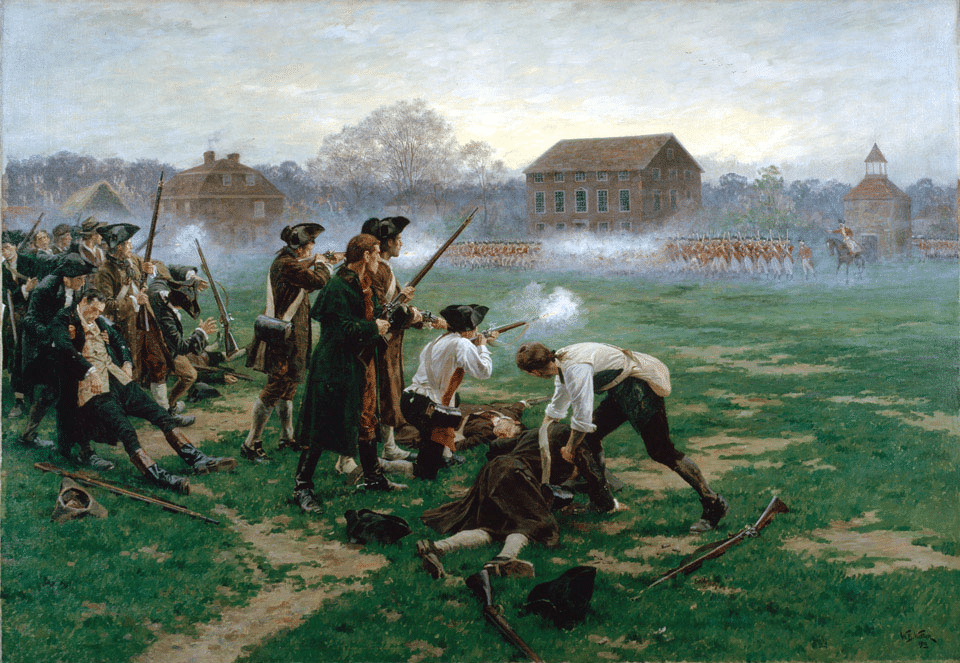
Top 10 Historic Sites In Massachusetts
10. Lowell National Historical Park
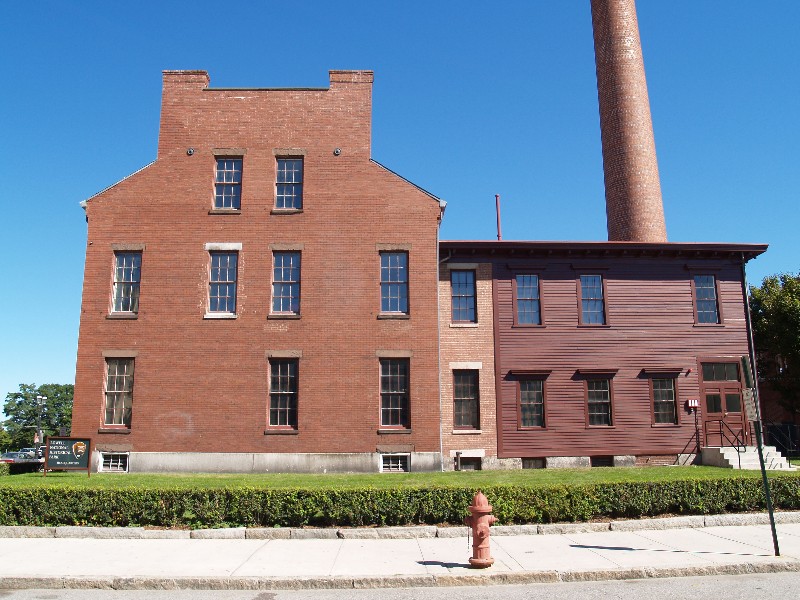
We’re on to the Top 10 Historic Sites In Massachusetts and our next site was established due to its significant cultural and historical sites and structures. The significance of these cultural and historical sites and structures symbolized aspects of the Industrial Revolution.
At #10 on our list is Lowell National Historical Park.
The Industrial Revolution transformed economies that had been based on agriculture and handicrafts into economies based on large-scale industry, mechanized manufacturing, and the factory system. New machines, new power sources, and new ways of organizing work made existing industries more productive and efficient.
Ground Zero for this revolution in America were the water-powered textile mills at Lowell, Massachusetts. The Lowell National Historical Park Visitor Center is a great place to learn about all of this while visiting some fascinating historical sites.
Things To Do At The Site
- Take a guided tour: The park offers several guided tours, including tours of the Boott Cotton Mills Museum, the Mill Girls and Immigrants Exhibit, and the Water Power Canal System.
- Visit the Visitor Center: The Visitor Center is a great place to start your visit. It offers an orientation film, exhibits, and park information.
- Explore the Mill Girls and Immigrants Exhibit: This exhibit tells the story of the young women who came to work in the mills of Lowell and the immigrants who worked alongside them.
- Visit the Boott Cotton Mills Museum: This museum is located in an actual mill building and features exhibits about the history of textile manufacturing in Lowell.
- Walk along the canals: The park has several miles of canals that were used to power the mills. Walking along the canals is a great way to appreciate the engineering and ingenuity that went into creating them.
- Take a trolley tour: The park offers trolley tours of the historic district, which is a great way to see the city and learn about its history.
- Visit the National Park Store: The store offers a wide selection of books, souvenirs, and gifts related to the park and its history.
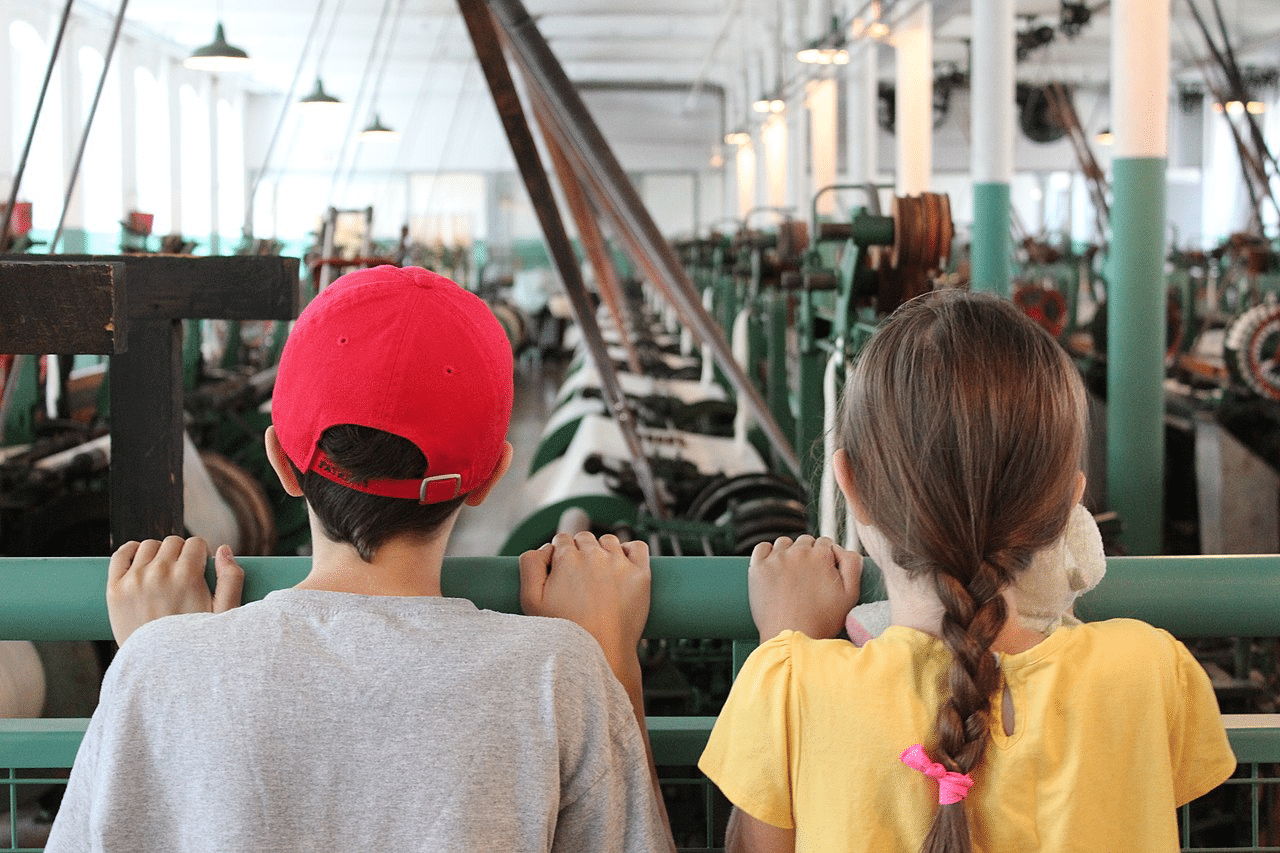
9. Longfellow House-Washington’s Headquarters National Historic Site
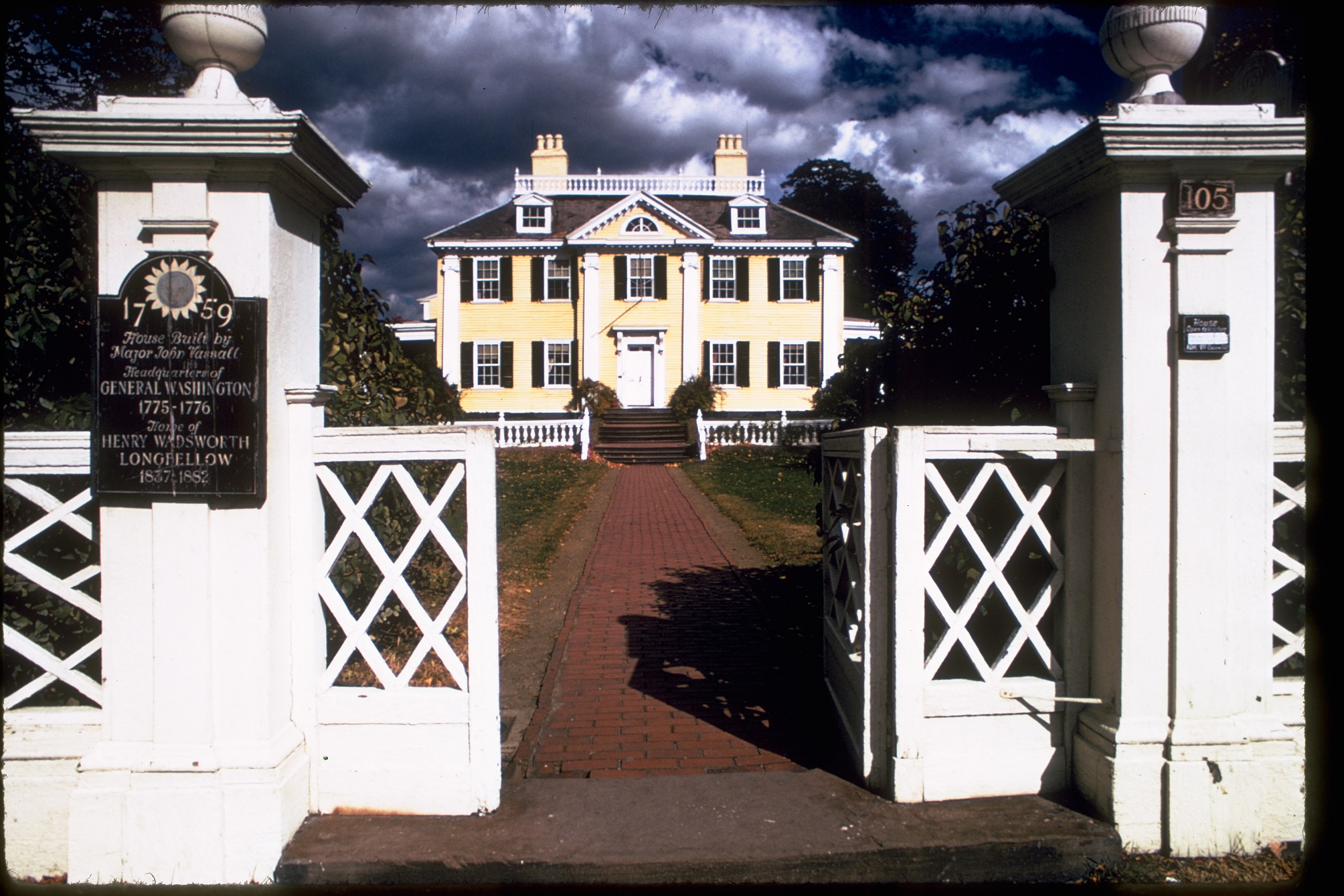
Our next historic site is a place where fiction and fact come together in the form of a literary genius and one of America’s Founding Fathers. At #9 on our list of the Best Historic Sites In Massachusetts is the Longfellow House-Washington’s Headquarters National Historic Site.
Longfellow House-Washington’s Headquarters National Historic Site is located in Cambridge, Massachusetts. It’s the former home of the poet Henry Wadsworth Longfellow. The house is also notable for its association with George Washington, who used it as his headquarters during the Revolutionary War.
The house was originally built in 1759 for John Vassall, a wealthy merchant and Loyalist. During the Revolutionary War, the house was confiscated by the Continental Army and used as a headquarters for George Washington from 1775 to 1776. After the war, the house was returned to the Vassall family, who sold it to Longfellow’s grandfather in 1843.
Henry Wadsworth Longfellow lived in the house from 1837 until his death in 1882. During his time there, he wrote many of his most famous poems, including “Paul Revere’s Ride” and “The Song of Hiawatha.”
Longfellow’s descendants continued to own the house until 1972, when it was donated to the National Park Service and designated a National Historic Site.
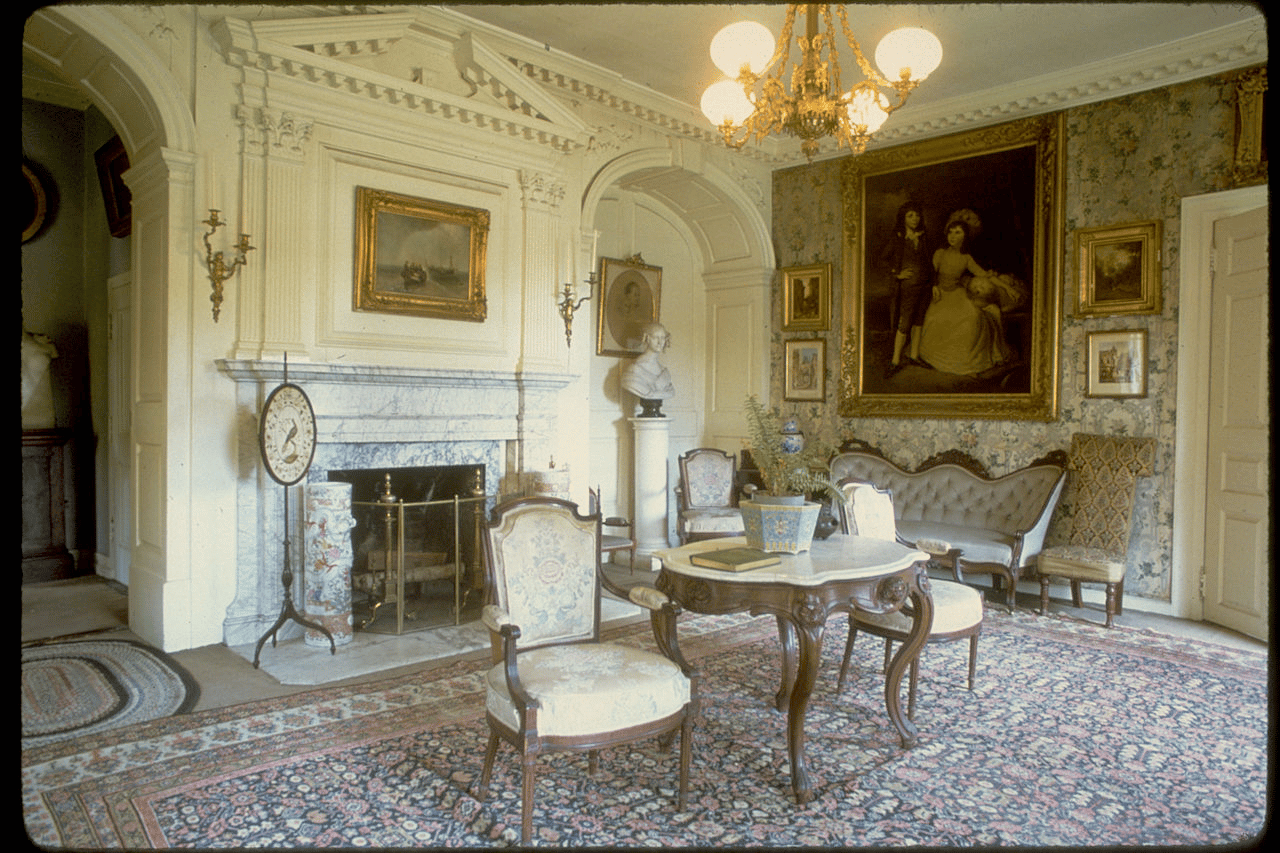
RELATED: 10 WONDERFUL National Parks Near Boston
Things To Do At The Site
- Tour the historic house: Visitors can tour the Longfellow House and learn about the family and the famous poets who lived there.
- Learn about George Washington’s time in Cambridge: Washington used the Longfellow House as his headquarters during the Siege of Boston. Visitors can learn about his time there and see where he slept and worked.
- Explore the gardens: The Longfellow House has beautiful gardens that are open to the public. Visitors can stroll through the gardens and see a variety of plants and flowers.
- Attend events and programs: The site hosts a variety of events and programs throughout the year, including lectures, concerts, and living history demonstrations.
- Enjoy the surrounding area: The Longfellow House is located in Cambridge, Massachusetts, which is home to many other historic sites, museums, and attractions. Visitors can explore the area and learn about the rich history of Massachusetts.
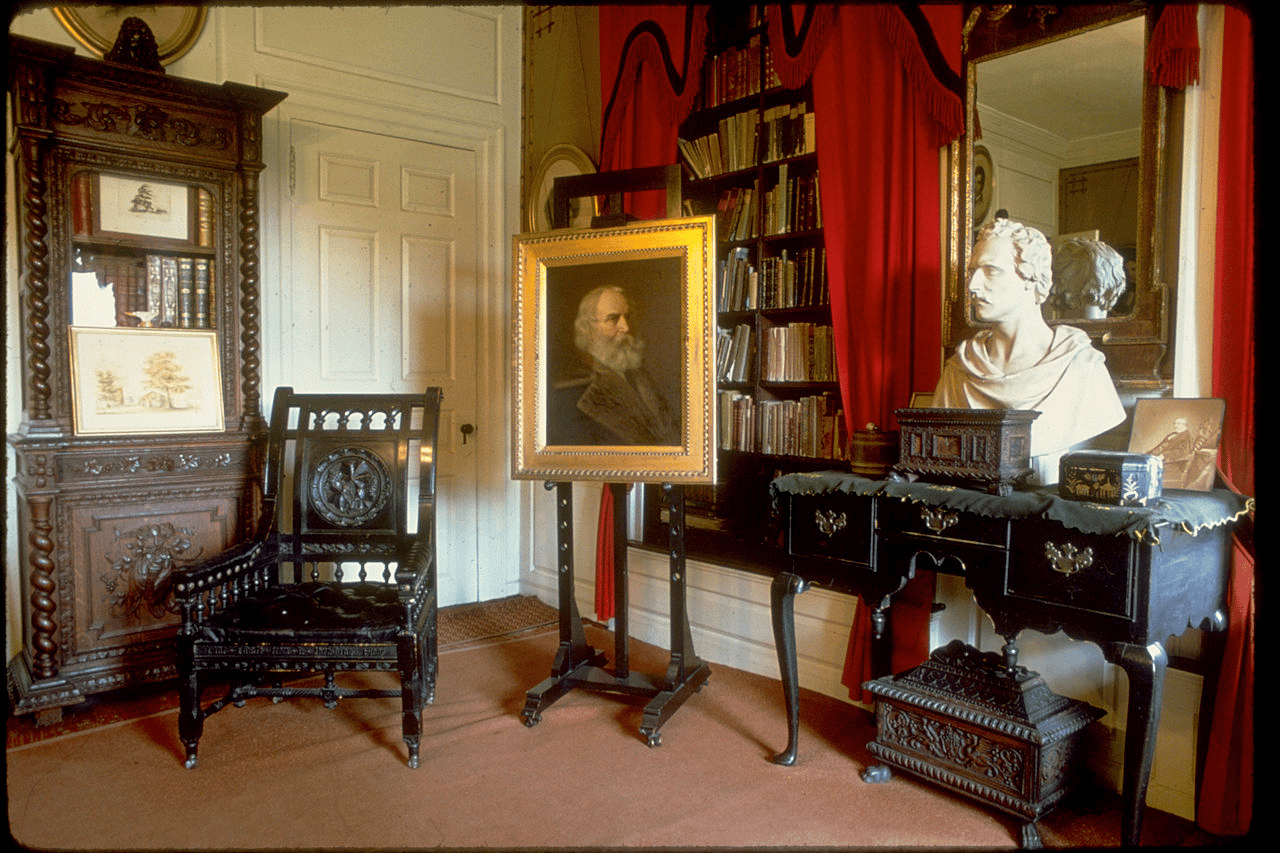
RELATED: 10 BEST Revolutionary War Sites In America
8. Salem Maritime National Historic Site

If you enjoy naval histories then you’ll love our next site. At #8 on our list of the Best Historic Sites In Massachusetts is the Salem Maritime National Historic Site.
It was established in 1938 to preserve and interpret the maritime history of Salem and the New England region during the colonial era and early Republic.
The site consists of several historic buildings, including the Custom House, which served as the center of Salem’s maritime trade during the 19th century, and several restored homes and warehouses that served as residences and stores for Salem’s maritime merchants.
Visitors to the Salem Maritime National Historic Site can take guided tours of the historic buildings, see exhibits on the history of Salem’s maritime trade, and learn about the lives of sailors, merchants, and other individuals who were involved in the maritime industry.
The site also features a 9-acre park that includes a replica of a historic ship’s mast, a restored wharf, and interpretive exhibits on the history of Salem’s port.
In addition to its historical significance, the Salem Maritime National Historic Site is also notable for its architecture, which represents a mix of Georgian, Federal, and Greek Revival styles, reflecting the tastes and prosperity of Salem’s maritime merchants during the late 18th and early 19th centuries.
RELATED: 18 BEAUTIFUL Massachusetts National Parks
7. Frederick Law Olmstead National Historic Site
While we’re More Than Just Parks our next historic site celebrates the man who’s best known as the creator of major urban parks from the green spaces that help define our towns and cities to suburban life to protected wilderness areas. At #7 is the Frederick Law Olmsted National Historic Site.
The Frederick Law Olmsted National Historic Site is a National Historic Site located in Brookline, Massachusetts. It is dedicated to preserving the home and office of Frederick Law Olmsted.
Frederick law Olmstead
Frederick Law Olmsted (1822-1903) was an American landscape architect and designer who is considered one of the fathers of American landscape architecture.
Olmsted is best known for designing several iconic parks and public spaces, including Central Park in New York City and the Emerald Necklace park system in Boston, Massachusetts.
Olmsted began his career as a journalist and social critic, but he turned to landscape architecture after winning a design competition for New York City’s Central Park in 1858.
Over the course of his career, he designed many other parks, including Prospect Park in Brooklyn the Biltmore Estate in Asheville and the grounds of the U.S. Capitol in Washington, D.C.
Olmsted’s designs were notable for their naturalistic style, which emphasized the integration of buildings, pathways, and water features with the surrounding natural environment.
He believed that public parks were essential to the health and well-being of urban residents and that they should be designed to provide a respite from the stresses of city life.
He Was Also A Conservationist
In addition to his work as a landscape architect, Olmsted was also a conservationist and a social reformer.
He was a strong advocate for the preservation of natural areas and played a key role in the establishment of Yosemite and Yellowstone National Parks.
He also believed that parks should be accessible to all people, regardless of their social or economic status, and worked to create public spaces that were open and inclusive.
Today, Olmsted’s legacy can be seen in the many parks and public spaces that he designed, as well as in the ongoing efforts to preserve and protect natural areas for future generations.
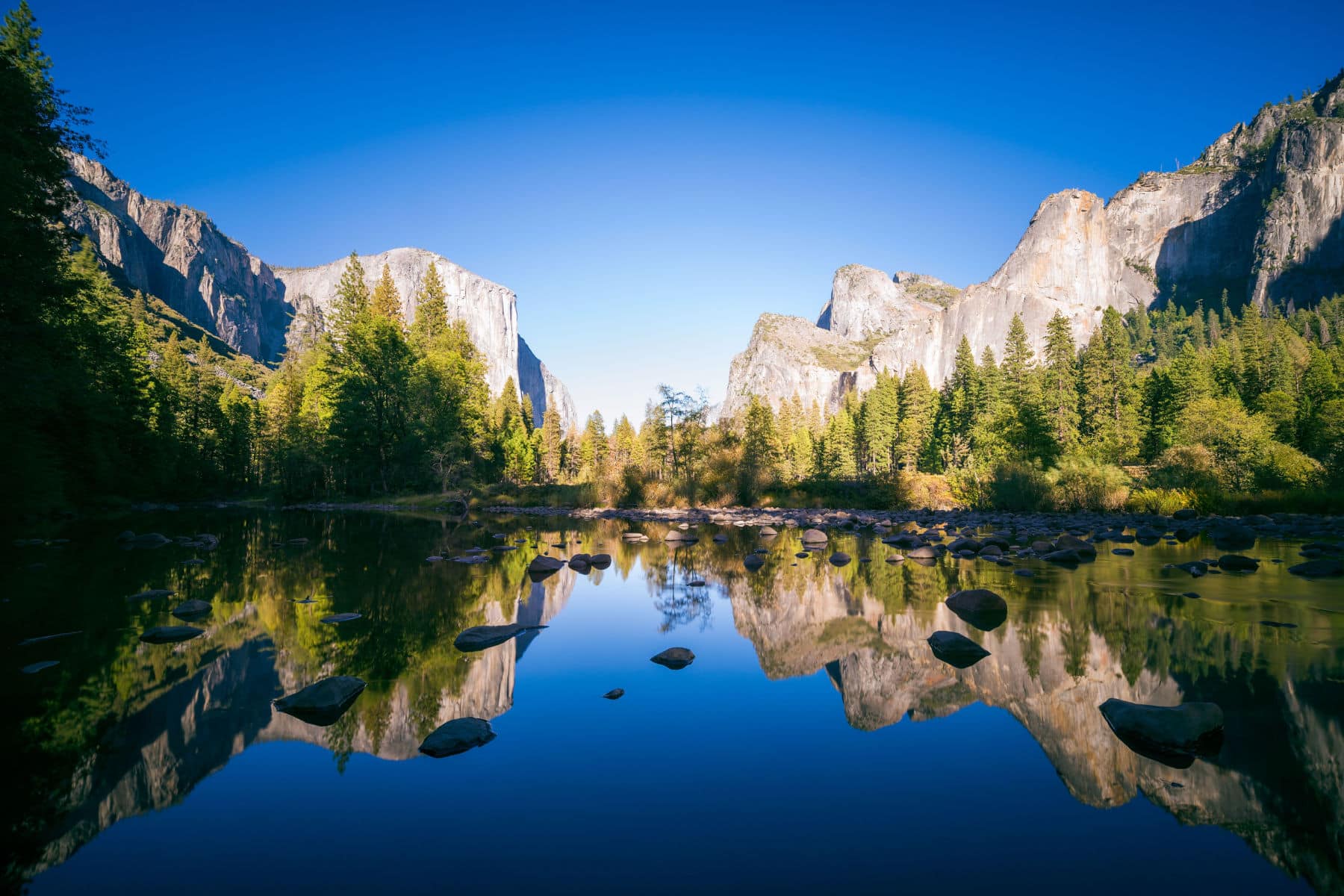
The Frederick Law Olmstead National Historic Site
It includes Olmsted’s home, which he designed and built in the late 19th century, as well as the office where he and his firm worked on many of their most famous projects.
The site also features the Olmsted-designed landscape of the surrounding property, including a terraced hillside, a rock garden, and a small lake.
Additionally, the site offers tours of the home and office, as well as the surrounding landscape. Visitors can learn about Olmsted’s life, work, and the historical context in which he worked.
The Father Of American Landscape Architecture
Frederick Law Olmsted is considered the “Father of American Landscape Architecture” and his work is notable for many of its design elements such as creating a naturalistic and informal appearance, using native plants, and creating a balance between man-made and natural elements.
Olmsted designed many notable projects including Central Park in New York City, The Boston Common, the U.S. Capitol Grounds in Washington, D.C. and many more.

RELATED: 20 MUST-SEE Historic Sites In New York
6. Boston African-American National Historic Site

Boston African American National Historic Site: Men dressed as Union soldiers pose by the Shaw Memorial in Boston. (Courtesy of Wikimedia Commons)
Our next historic site works with the Museum of African American History to preserve and interpret the inspiring history of the free Black community in antebellum Boston. This community, living on Beacon Hill, along with its white allies, led the nation in the struggle to abolish slavery.
At #6 on our list of the Best Historic Sites In Massachusetts is the Boston African-American National Historic Site.
The Boston African-American National Historic Site is a collection of historic buildings and sites in Boston, Massachusetts, that commemorates the contributions of African Americans to the city’s history and culture.
The site is managed by the National Park Service and includes several buildings and landmarks associated with prominent African American figures, events, and movements.
Things To Do
Here are some things you can do at the site:
- Visit the African Meeting House: The African Meeting House was built in 1806 and is the oldest surviving black church building in the United States. Today, it serves as a museum and cultural center and offers exhibits and educational programs about the history of Boston’s African American community.
- Explore the Black Heritage Trail: The Black Heritage Trail is a 1.6-mile walking trail that connects more than a dozen historic sites and landmarks related to Boston’s African American history. Along the trail, you can see the homes of prominent African American leaders, visit the site of the 54th Massachusetts Infantry Regiment, and learn about the Underground Railroad.
- Attend a Ranger-led program: The site offers a variety of ranger-led programs, including walking tours, talks, and special events. These programs provide a deeper understanding of the history and culture of Boston’s African American community.
- Visit the Abiel Smith School: The Abiel Smith School was built in 1835 and was the first public school for African American children in the United States. Today, it houses the Museum of African American History, which features exhibits and artifacts related to African American history and culture.
- Explore the Museum of African American History: In addition to the Abiel Smith School, the Museum of African American History has a second location in Nantucket, Massachusetts. Both sites offer exhibits, programs, and resources related to African American history and culture.
- Visit the Robert Gould Shaw and Massachusetts 54th Regiment Memorial: The memorial honors Robert Gould Shaw and the Massachusetts 54th Regiment, which was the first black regiment to fight for the Union Army during the Civil War. The memorial is located on the Boston Common and is a powerful reminder of the sacrifices made by African American soldiers during the war.
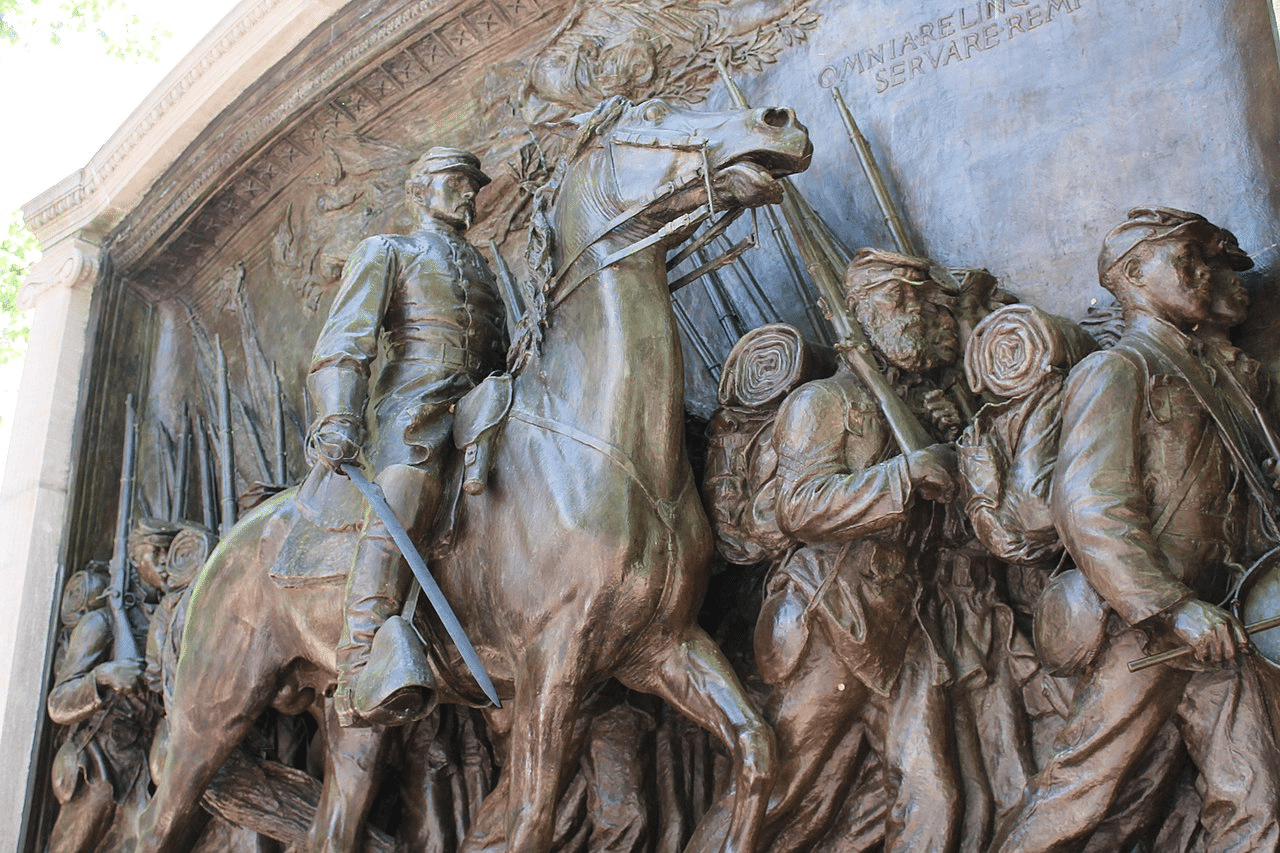
RELATED: 20 BEST Black History Sites In America For You To Visit
The Top 5 Historic Sites In Massachusetts
5. Minute Man National Historical Park

We’re on to the Top 5 Historic Sites In Massachusetts. At #5 we feature a site which gives the term “first responder” a whole new meaning.
Welcome to the Minute Man National Historical Park.
The History Of The “Minute Men”
The Minute Men were a militia group of American colonists during the Revolutionary War era who were ready to mobilize at a minute’s notice. They were also known as minutemen because of their ability to be ready for combat in just a few minutes.
The Minute Men played a crucial role in the early stages of the American Revolution. They were made up of farmers, craftsmen, and other ordinary citizens who were willing to take up arms to defend their communities against British forces.
Their name comes from the idea that they were able to be ready to fight in a minute’s notice, which was considered a remarkable feat at the time.
The Minute Men first gained fame during the Battles of Lexington and Concord in April 1775. In response to the British attempt to confiscate colonists’ weapons and ammunition, the Minute Men quickly mobilized to resist the British forces. The fighting that ensued marked the beginning of the American Revolution.
After the Battles of Lexington and Concord, the Minute Men continued to play an important role in the war. They were involved in many key battles, including the Battle of Bunker Hill and the Battle of Saratoga. They also served as scouts and provided intelligence to the Continental Army.
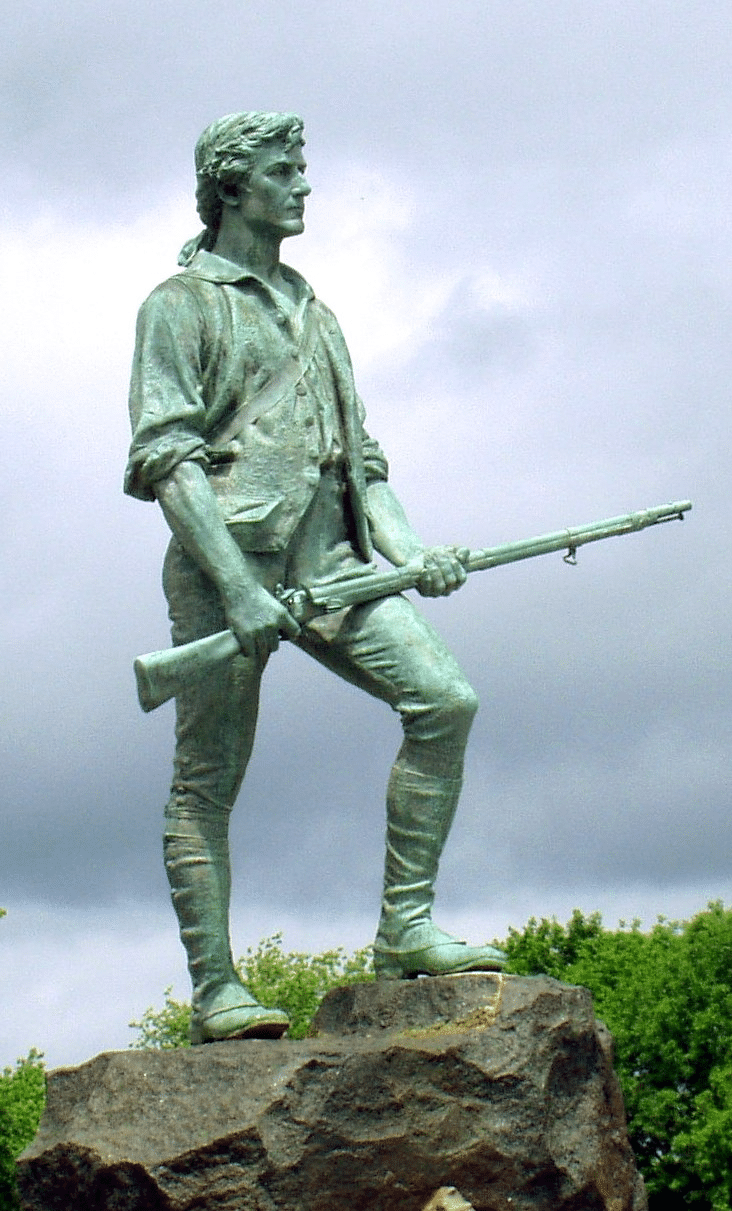
Minute Man National Historical Park
Minute Man National Historical Park is located in Massachusetts, which commemorates the events of April 19, 1775, when the American Revolutionary War began with the Battles of Lexington and Concord.
It preserves and interprets the historical sites, structures, and landscapes associated with the opening battles of the American Revolution, including the Lexington Battle Green, the North Bridge, and the wayside of the Battle Road.
Minute Man National Historical Park also includes the historic homes of notable figures of the time, such as the Buckman Tavern, the Lexington Depot, and the Munroe Tavern.
The park offers visitors a variety of ways to experience and learn about the history of the American Revolution, including ranger-led tours, self-guided tours, and special programming.
The park also offers a five-mile Battle Road Trail, which follows the historic route taken by British soldiers on April 19, 1775, and provides visitors with a sense of the landscape and the events of that day.
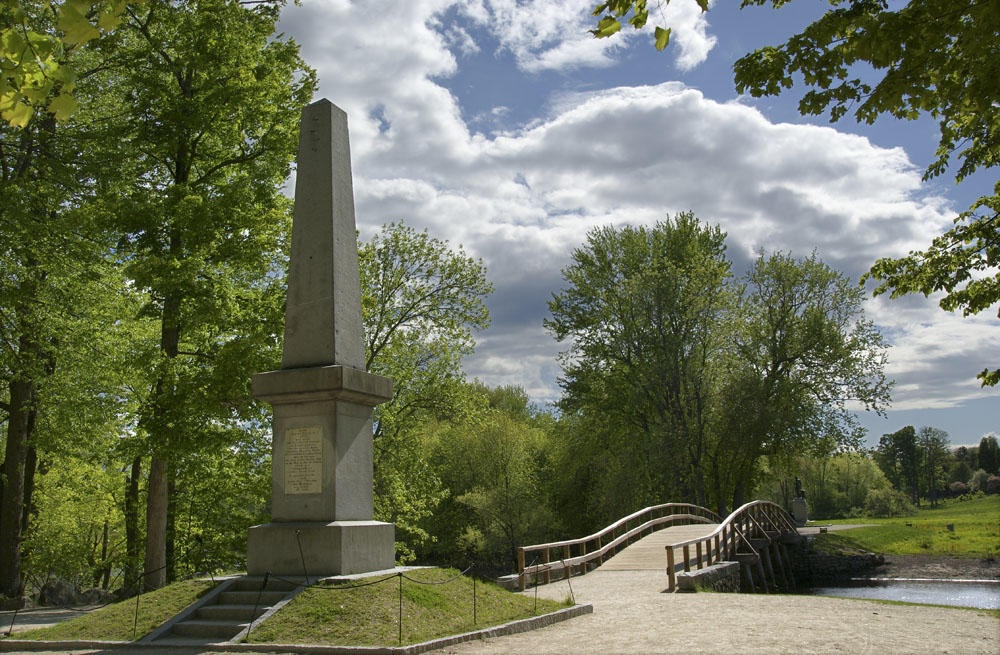
The park’s Minute Man statue, by Daniel Chester French, is one of the iconic features of the park. The statue depicts a minuteman, a member of a group of soldiers who were ready to fight at a minute’s notice during the American Revolution.
Minute Man National Historical Park also serves as an important educational resource, providing opportunities for students and researchers to learn about the events, people, and ideas that shaped the nation’s history.
RELATED: 25 Bucket List Famous Landmarks In America (MUST-SEE)
4. Boston National Historical Park
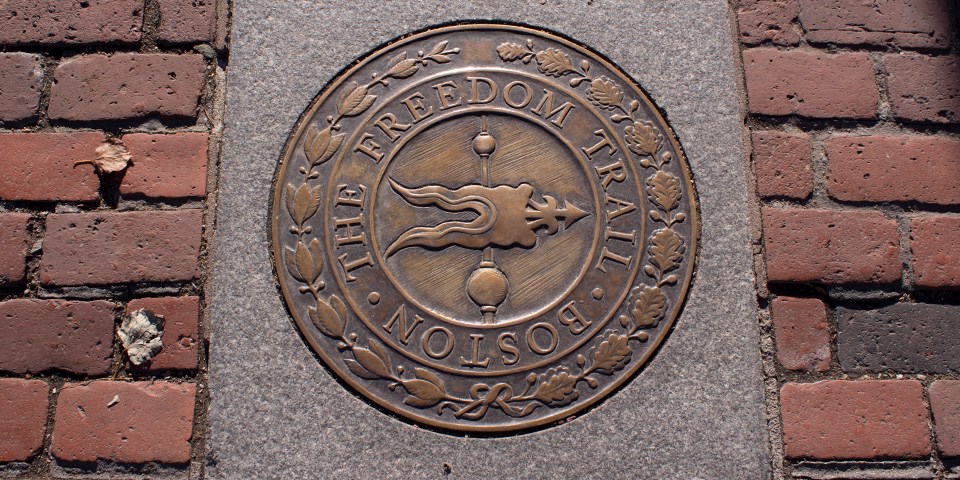
We’re on to the “Final Four” sites. Our next site is an association of sites that commemorate the events and people that played a significant role in the American Revolution and the early years of the United States.
At #4 on our list of the Best Historic Sites In Massachusetts is the Boston National Historical Park.
The History Of The Park
The history of the park begins with the American Revolution, when Boston played a crucial role in the fight for independence from Great Britain. The city was the site of several key events, including the Boston Massacre, the Boston Tea Party, and the Battles of Lexington and Concord.
In the years following the American Revolution, Boston continued to play an important role in American history. The city was a center of commerce and industry, and it was also a hub of abolitionist activity during the lead-up to the Civil War.
The idea for the Boston National Historical Park was first proposed in the 1950s as a way to preserve and share the city’s rich history.
In 1961, the National Park Service established the Boston National Historic Sites, which included the Paul Revere House, the Old North Church, and the Old South Meeting House.
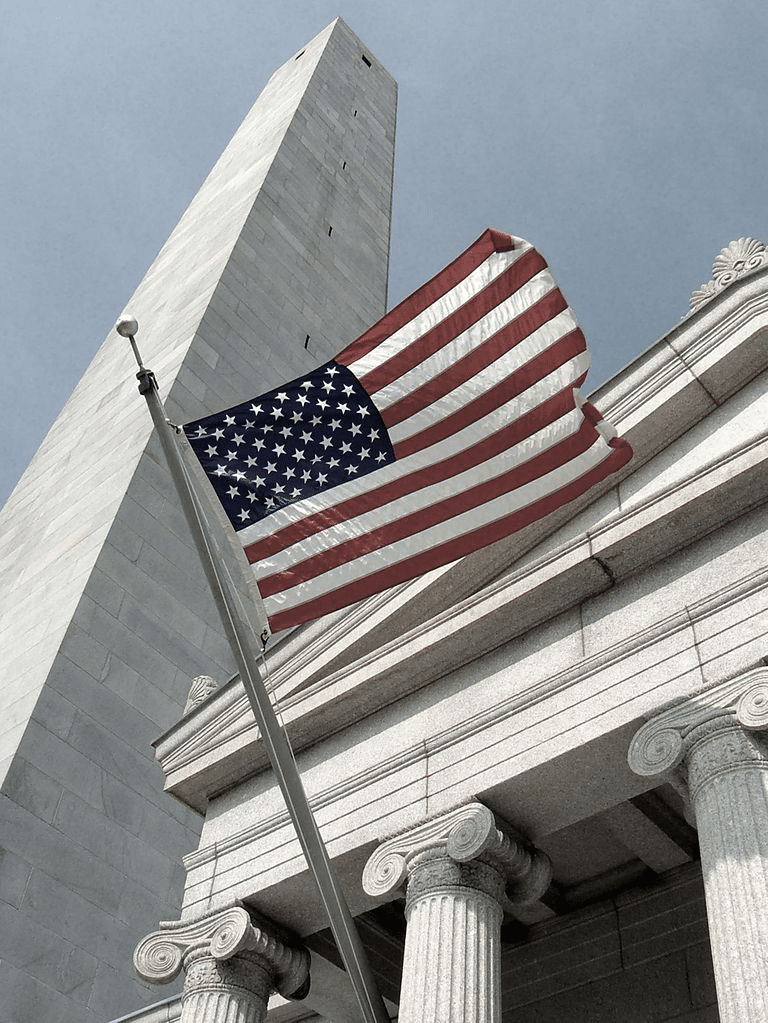
The Park Is Made Up Of Several Sites Including:
–The Freedom Trail: is a 2.5-mile-long brick trail that passes by 16 historically significant sites in Boston, including the USS Constitution Museum, the Massachusetts State House, and the Paul Revere House.
–Bunker Hill Monument: is a 221-foot granite obelisk that marks the site of the Battle of Bunker Hill, one of the first major battles of the American Revolution.
–Charlestown Navy Yard: is a historic naval shipyard that played a significant role in the American Revolution and the War of 1812. Visitors can tour the USS Constitution Museum and the dry dock where the USS Constitution was built.
–Faneuil Hall and Quincy Market: was a central meeting place for the Sons of Liberty and other revolutionary groups, and is now a popular tourist destination.
–The Old North Church: was built in 1723 and is famous for being the location of the signal lanterns that warned of the approaching British soldiers prior to the Battle of Lexington and Concord.

3. John Fitzgerald Kennedy National Historic Site

We’re on to our final three sites and these are ones you will not want to miss. At #3 on our list of the Best Historic Sites In Massachusetts is a site which honors America’s 35th President of the United States. Welcome to the John Fitzgerald Kennedy National Historic Site.
John F. Kennedy (1917-1963) was President of the United States, serving from 1961 until his assassination in 1963. He was a member of the Democratic Party and is widely regarded as one of the most charismatic and inspiring leaders of the 20th century.
Kennedy is best known for his role in the Cold War, including the Cuban Missile Crisis, where he faced down the Soviet Union and helped to avoid a nuclear war.
He was also a strong advocate for space exploration and science, and he is credited with setting the goal of landing a man on the moon by the end of the 1960s.
Kennedy established the Peace Corps, a volunteer program that sent young Americans to work in developing countries, and he implemented a series of programs aimed at improving the economy and reducing poverty.

What Can I See At The John F. Kennedy National Historic Site
The John Fitzgerald Kennedy National Historic Site preserves and interprets the birthplace, childhood home, and early family life of President John F. Kennedy.
Visitors to the site can:
- Tour the Kennedy family home, which has been restored to its appearance in the early 20th century, when JFK lived there as a child.
- See exhibits on JFK’s life and legacy, including photographs, artifacts, and personal items from his childhood and presidency.
- Learn about JFK’s formative years, including his family background, education, and political beliefs, as well as the events that shaped his presidency and his impact on American history.
- Visit the adjacent Kennedy birthplace, a nearby museum dedicated to JFK’s early life and the history of his family.
- Walk the grounds of the site, which include a small park with a memorial to JFK and a flagpole that was dedicated in his memory.
- See a film on JFK’s life and legacy, which is shown in the museum’s theater.
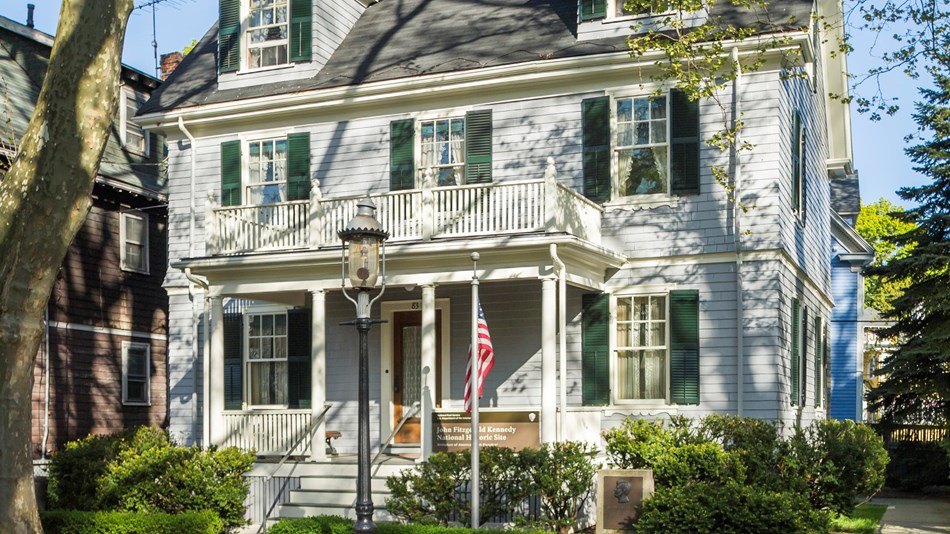
Let us not seek the Republican answer or the Democratic answer, but the right answer.
-President John Fitzgerald Kennedy
Let us not seek to fix the blame for the past. Let us accept our own responsibility for the future.
2. Adams National Historical Park

We’re on to the final two sites. In the runner-up spot at #2 is a site which commemorates one of America’s most prominent political families. It’s a family which produced not one, but two Presidents of the United States. Welcome to the Adams National Historical Park.
The park is located in Quincy, Massachusetts, that preserves the homes and estates of the Adams family.
The park includes four properties: the birthplaces of John Adams and his son, John Quincy Adams; the “Old House,” a mansion that served as the family’s residence for several generations; and the Stone Library, which houses the family’s collection of books, papers, and other artifacts.
The history of the Adams National Historical Park dates back to the late 17th century when John Adams’ ancestors first settled in the area. John Adams was born in the “saltbox” house in 1735, and his son, John Quincy Adams, was born in the “birthplace” house in 1767.
Both men would go on to become Presidents of the United States, with John Adams serving from 1797 to 1801 and John Quincy Adams serving from 1825 to 1829.
One Of America’s Most Prominent Political Families
The “Old House” was purchased by John Adams in 1787 and served as the family’s residence for several generations. The house was expanded and renovated over the years, and it contains numerous artifacts and furnishings that reflect the family’s history and legacy.
The Stone Library was built in 1870 to house the family’s extensive collection of books, papers, and other documents. The library contains over 14,000 volumes, including many rare and valuable works, as well as correspondence and other records that provide insight into the family’s political and personal lives.
The Adams National Historical Park was established in 1946 as a way to preserve and promote the history of the Adams family and their contributions to American history.
The park has since become a popular tourist destination and educational resource, offering guided tours, exhibits, and programs that explore the family’s legacy and its impact on American politics, culture, and society.
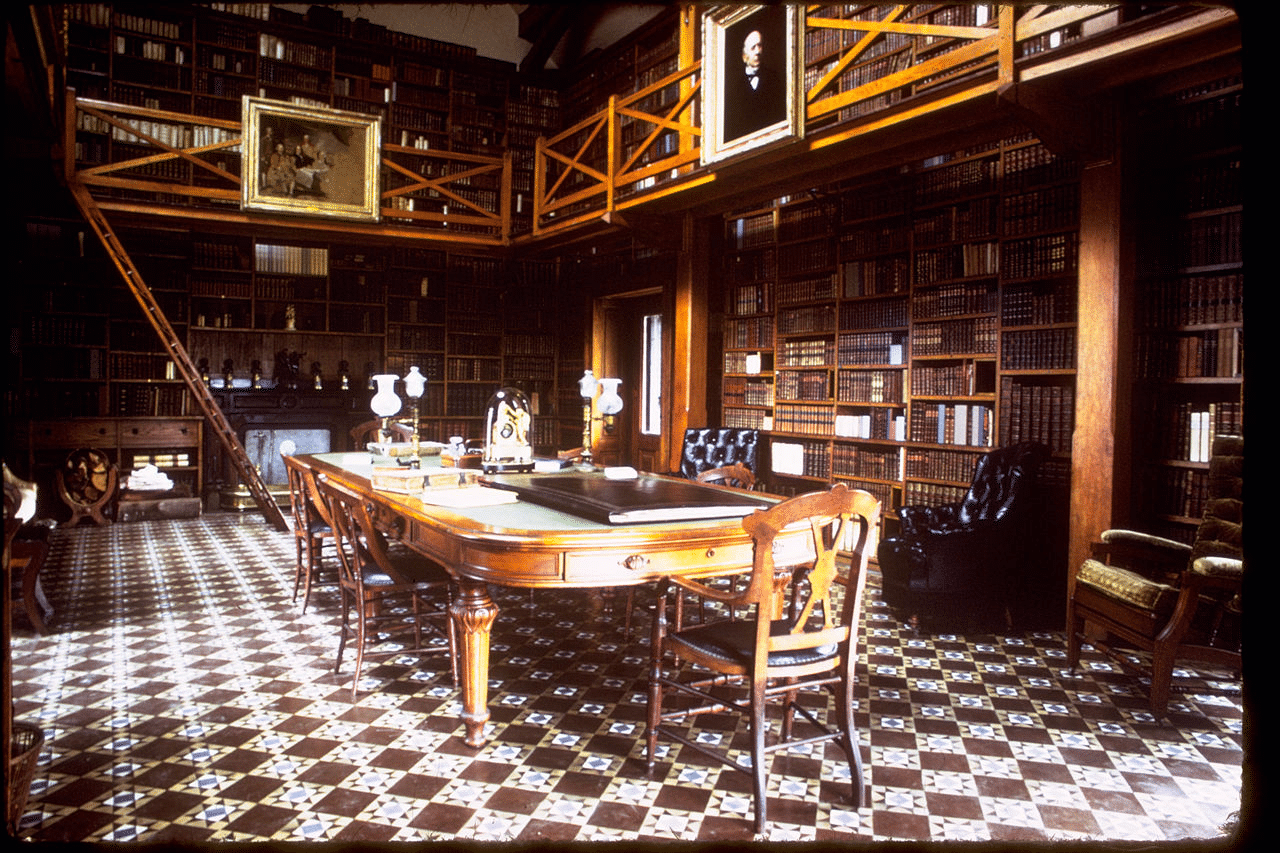
John Adams
John Adams was the 2nd President of the United States (1797-1801), and one of the founding fathers of the country.
He was also a lawyer, diplomat, and political theorist. He played a key role in the American Revolution, helping to draft the Declaration of Independence and serving as a diplomat in Europe to gain support for the American cause.
Adams also served as Vice President under George Washington.
John Quincy Adams
John Quincy Adams, son of John and Abigail Adams, served as the sixth President of the United States from 1825 to 1829.
A member of multiple political parties over the years, he also served as a diplomat, a Senator, and a member of the House of Representatives.
1. Bunker Hill Monument
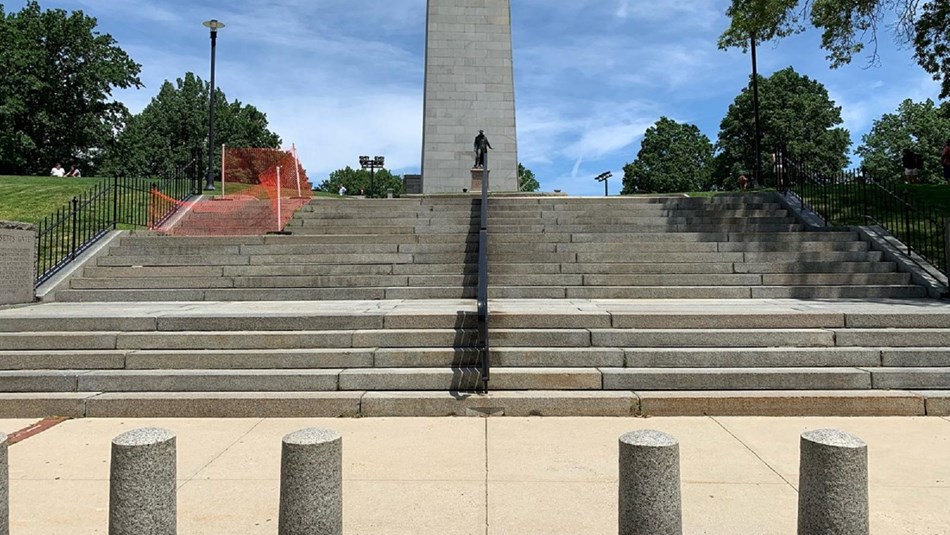
As the #1 Historic Site In Massachusetts More Than Just Parks has selected Bunker Hill Monument.
The Bunker Hill Monument in Charlestown, Massachusetts, commemorates a pivotal early battle in the American war for independence. It is the first colossal obelisk erected in the United States.
The Battle Of Bunker Hill
On June 17, 1775, New England soldiers faced the British army for the first time in a pitched battle. Popularly known as “The Battle of Bunker Hill,” bloody fighting took place throughout a hilly landscape of fenced pastures that were situated across the Charles River from Boston.
Though the British forces claimed the field, the casualties inflicted by the Provincial solders from Massachusetts, Connecticut, and New Hampshire were staggering. Of the some 2,400 British Soldiers and Marines engaged, some 1,000 were wounded or killed.
Fifty years after the battle, the Marquis De Lafayette set the cornerstone of what would become a lasting monument and tribute to the memory of the Battle of Bunker Hill. The project was ambitious: construct a 221-foot tall obelisk built entirely from quarried granite.
It took over seventeen years to complete, but it still stands to this day atop a prominence of the battlefield now known as Breed’s Hill. Marking the site where Provincial forces constructed an earthen fort, or “Redoubt,” prior to the battle, this site remains the focal point of the battle’s memory. (Source: NPS)
Things To Do
Here are some things to do at the Bunker Hill Monument:
- Climb the Monument: Visitors can climb the 294 steps to the top of the monument for panoramic views of Boston and the surrounding area.
- Visit the Museum: The Bunker Hill Museum is located across the street from the monument and features exhibits and artifacts related to the Battle of Bunker Hill and the American Revolution.
- Walk the Freedom Trail: The Bunker Hill Monument is one of the stops on Boston’s famous Freedom Trail, a 2.5-mile trail that takes visitors to 16 historic sites throughout the city.
- Explore the Charlestown Navy Yard: The Charlestown Navy Yard is a historic shipbuilding facility located near the Bunker Hill Monument. Visitors can tour the USS Constitution Museum, which is dedicated to the history of the USS Constitution, the oldest commissioned warship afloat in the world.
- Attend a Ranger Program: The National Park Service offers a variety of ranger-led programs and talks, including guided tours of the monument and the Charlestown Navy Yard, as well as special events throughout the year.
- Visit the Bunker Hill Community College: The community college is located across the street from the monument and offers a variety of programs related to history and culture, as well as a library and art gallery.
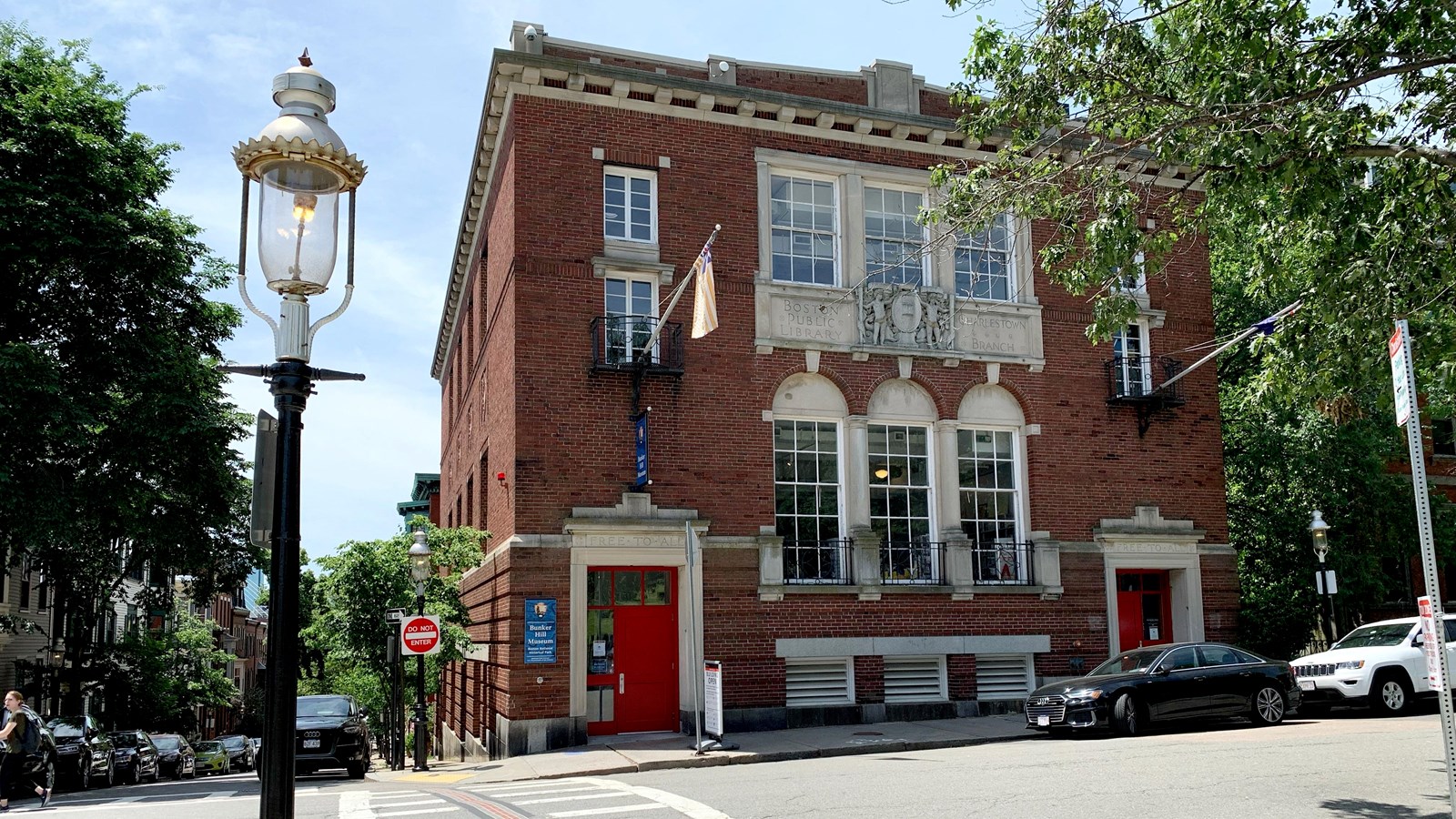
List Of Historic Sites In Massachusetts
- Bunker Hill Monument
- Adams National Historical Park
- John Fitzgerald Kennedy National Historic Site
- Boston National Historical Park
- Minute Man National Historical Park
- Boston African-American National Historic Site
- Frederick Law Olmstead National Historic Site
- Salem Maritime National Historic Site
- Longfellow House-Washington’s Headquarters National Historic Site
- Lowell National Historical Park
- Lexington & Concord
- Walden Pond
- Emily Dickinson Museum
- Blue Hill Meteorological Observatory
- Lizzie Borden House
Why Trust Us About Historic Sites In Massachusetts?
We’re Jim Pattiz and Will Pattiz, collectively known as the Pattiz Brothers and we absolutely LOVE the national parks.
You should probably know that we don’t just make this stuff up out of thin air. We’ve spent our entire adult lives exploring and filming America’s national parks and public lands.
We’ve worked with the National Park Service, the Department of Interior, USDA, U.S. Forest Service, and more for years creating films on important places and issues. Our work has been featured in leading publications all over the world and even some people outside of our immediate family call us experts on the national parks.
And, in 2018, our father – having spent a lifetime teaching history – joined us so that he could help us to tell the stories behind these amazing places.
Meet The Parks Brothers
We Hope You’ll Follow Our Journey

Our goal here at More Than Just Parks is to share the beauty of America’s national parks and public lands through stunning short films in an effort to get Americans and the world to see the true value in land conservation.
We hope you’ll follow our journey through the parks and help us to keep them the incredible places that they are. If you’re interested in joining the adventure then sign up below!
Related Links
What Is A National Park? To learn more about the difference between the various National Park Service designations check out our article that explains everything!
National Parks In Massachusetts: 18 SURPRISING Massachusetts National Parks
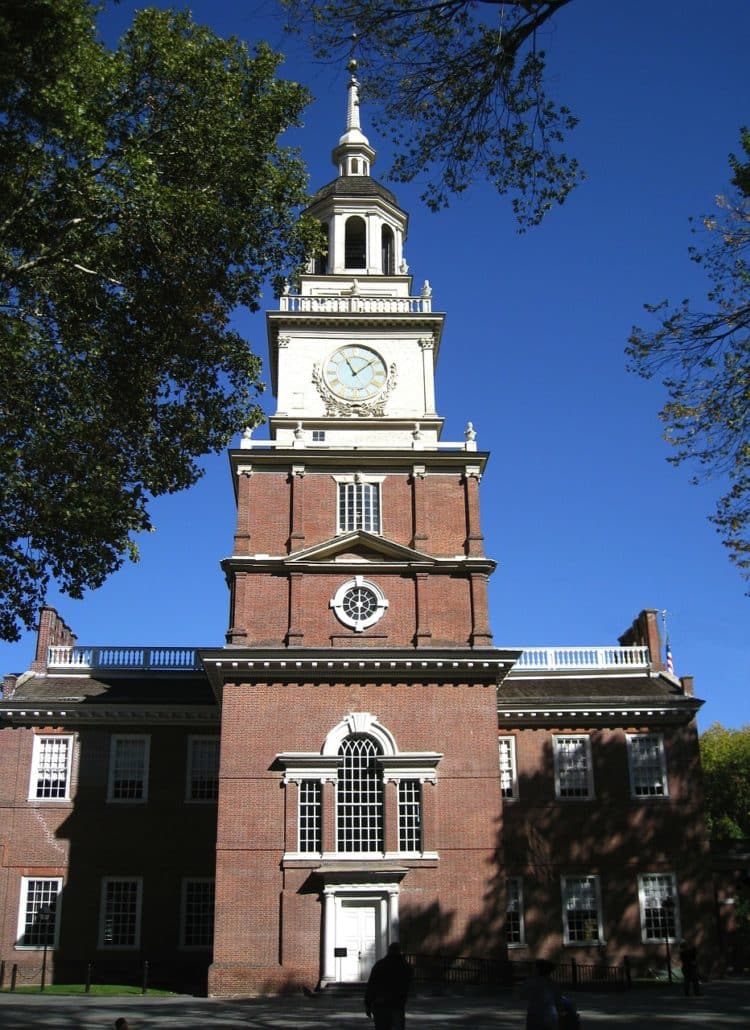


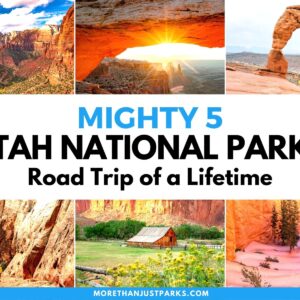

Leave a Reply